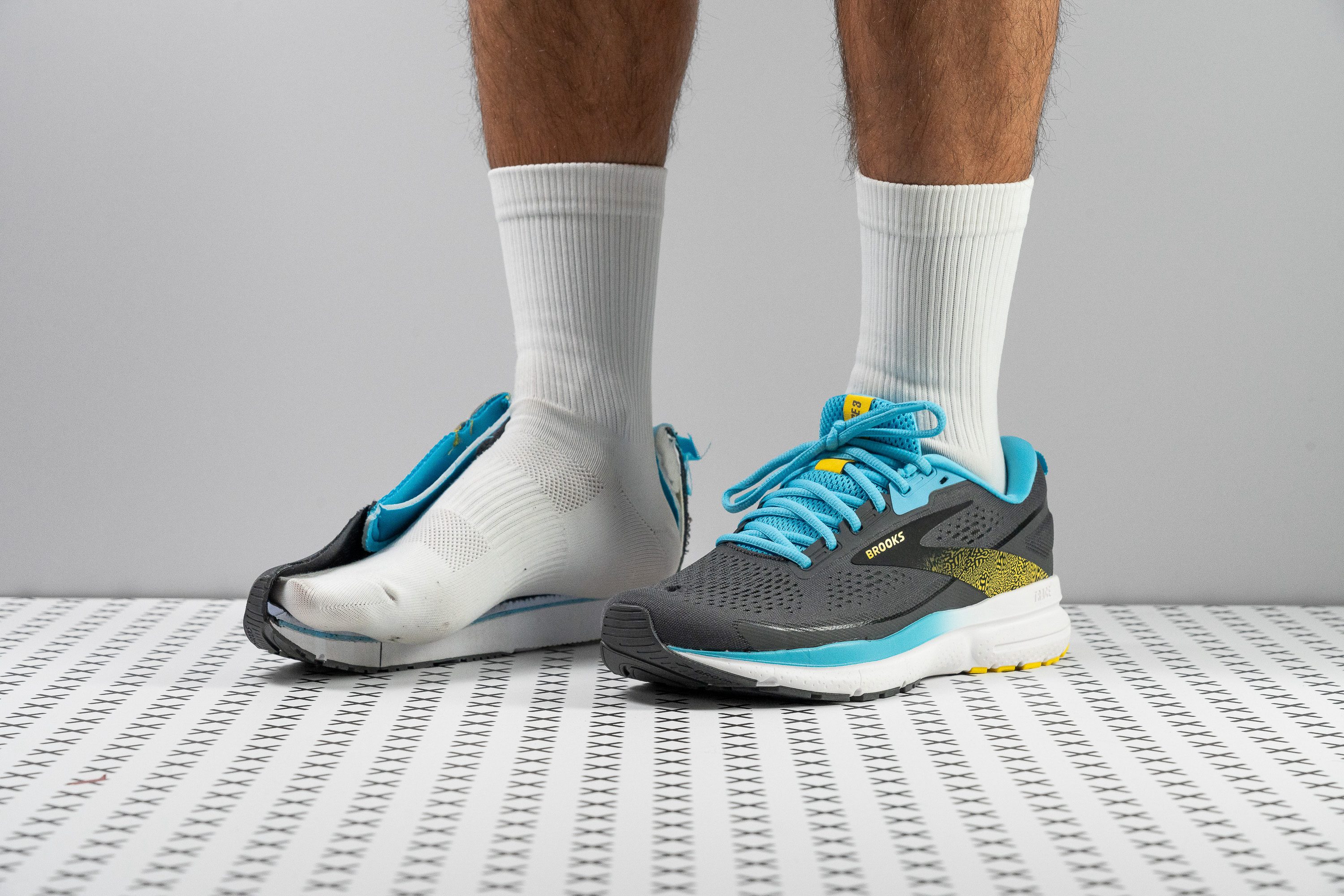Our verdict
- Top pick in best Brooks walking shoes
Pros
- Still lightweight
- Foam upgraded to DNA Loft
- Massive value at just $100
- Good heel cushion
- More spacious toebox
- Fantastic durability
- Versatile
Cons
- Upper downgrade
- Slight weight gain from v2
- Not for forefoot strikers
- Lacks grip on wet surface
Audience verdict
Comparison
The most similar running shoes compared
+ + Add a shoe | |||||
|---|---|---|---|---|---|
| Audience score | 76 Decent! | 77 Decent! | 81 Good! | 79 Good! | |
| Price | $100 | $75 | $100 | $70 | |
| Pace | Daily running | Daily running | Daily running | Daily running | |
| Shock absorption | Moderate | Moderate | - | - | |
| Energy return | Low | Low | - | - | |
| Traction | Moderate | Moderate | - | - | |
| Arch support | Neutral | Neutral | Neutral | Neutral | |
| Weight lab Weight brand | 9.1 oz / 257g 9 oz / 255g | 9.3 oz / 265g 9.4 oz / 267g | 9.7 oz / 274g 10 oz / 283g | 9.3 oz / 264g 10 oz / 283g | |
| Drop lab Drop brand | 11.9 mm 12.0 mm | 10.1 mm 10.0 mm | 12.5 mm 9.0 mm | 9.6 mm 8.0 mm | |
| Strike pattern | Heel | Heel | Heel | HeelMid/forefoot | |
| Size | True to size | Slightly small | True to size | Slightly small | |
| Midsole softness | Balanced | Balanced | Balanced | Balanced | |
| Difference in midsole softness in cold | Small | Small | Small | Normal | |
| Toebox durability | Bad | Decent | Good | Decent | |
| Heel padding durability | Good | Good | Good | Bad | |
| Outsole durability | Good | Good | Bad | Decent | |
| Breathability | Moderate | Moderate | Breathable | Moderate | |
| Width / fit | Medium | Medium | Medium | Medium | |
| Toebox width | Medium | Medium | Medium | Wide | |
| Stiffness | Moderate | Moderate | Stiff | Moderate | |
| Torsional rigidity | Moderate | Moderate | Moderate | Moderate | |
| Heel counter stiffness | Stiff | Moderate | Moderate | Moderate | |
| Heel lab Heel brand | 34.1 mm 34.0 mm | 32.2 mm 32.0 mm | 30.7 mm 25.0 mm | 30.8 mm 30.0 mm | |
| Forefoot lab Forefoot brand | 22.2 mm 22.0 mm | 22.1 mm 22.0 mm | 18.2 mm 16.0 mm | 21.2 mm 22.0 mm | |
| Widths available | NormalWide | NarrowNormalWideX-Wide | Normal | NormalX-Wide | |
| Orthotic friendly | ✓ | ✓ | ✓ | ✓ | |
| Season | All seasons | All seasons | SummerAll seasons | All seasons | |
| Removable insole | ✓ | ✓ | ✓ | ✓ | |
| Ranking | #347 Bottom 7% | #342 Bottom 8% | #294 Bottom 21% | #327 Bottom 12% | |
| Popularity | #142 Top 38% | #60 Top 16% | #324 Bottom 13% | #286 Bottom 23% |
Who should buy
After testing the Trace 3 in the lab, we think is an excellent choice for:
- Fans of the Trace 1 & 2 who were left wanting more energy return—this version finally upgrades to the superior DNA Loft.
- Heel strikers in search of a durable outsole in a high-drop, budget-friendly running shoe.
- Beginners looking for an affordable, reliable shoe that performs well across all types of runs and daily activities.
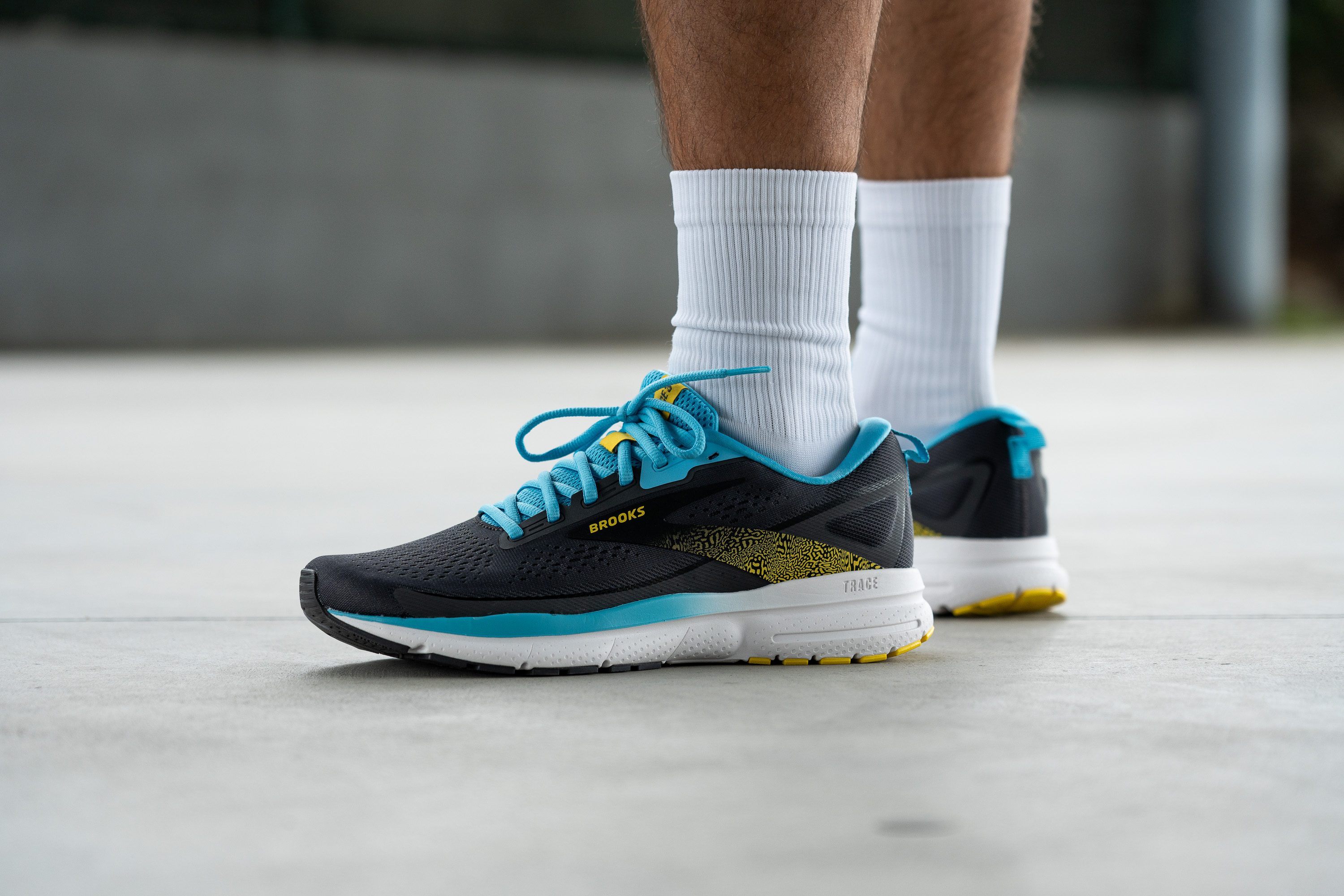
Who should NOT buy
Despite multiple upgrades, the Trace 3 suffers from reduced breathability—this is why we do not recommend it for runners who frequently tackle summer workouts. Instead, we suggest the Nike Winflo 10, which offers better ventilation for warm weather running.
Moreover, we believe the Trace 3 is not the best choice for individuals with forefoot or midfoot striking patterns. We think a better option would be the Saucony Axon 3, another wallet-friendly alternative that features a less steep drop, providing a more suitable ride for these runners.
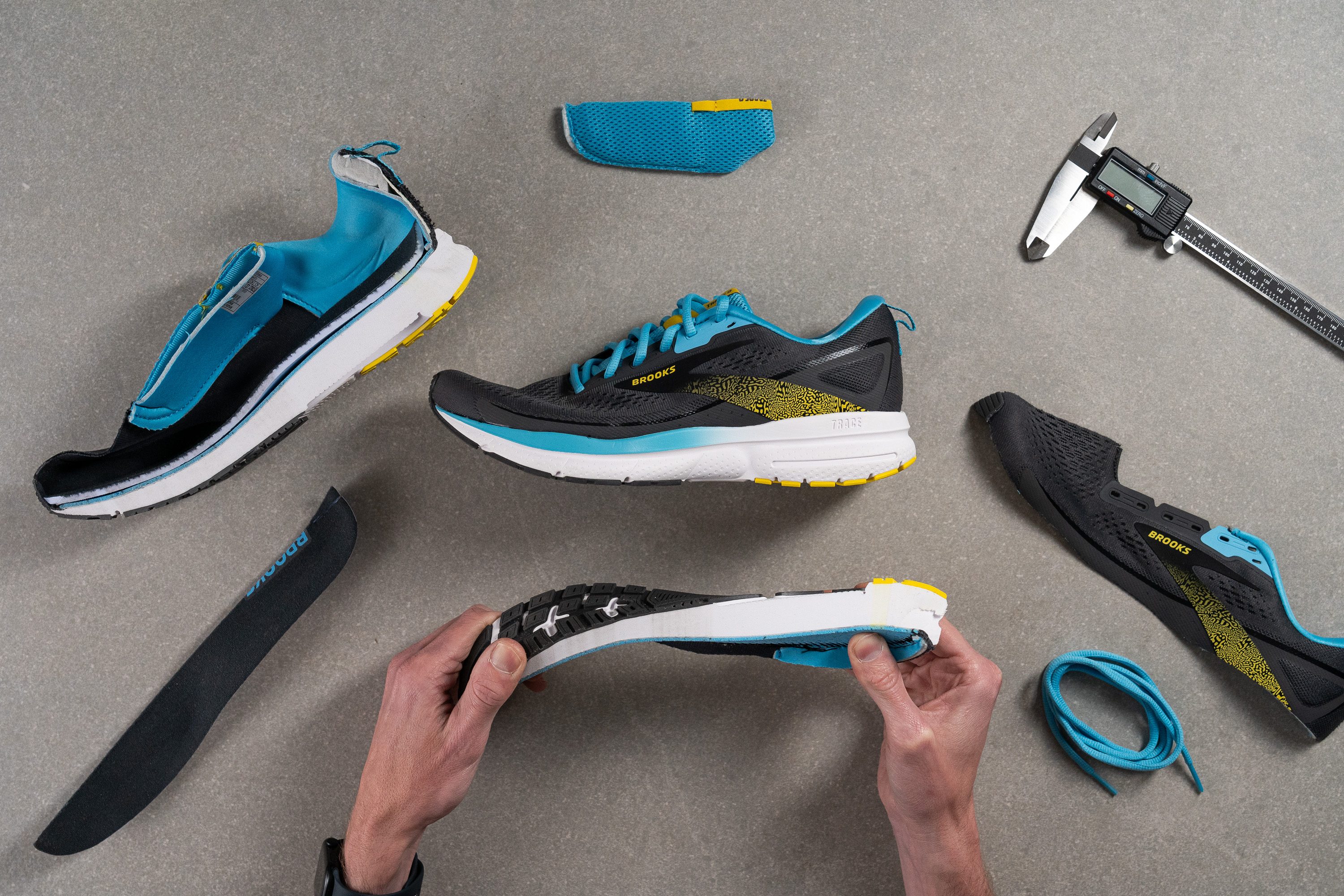
Cushioning
Shock absorption
The switch to DNA Loft v2 delivers solid shock absorption in the heel with 125 SA, which is enough to handle most casual runs. On the other hand, the forefoot remains below average at 94 SA.
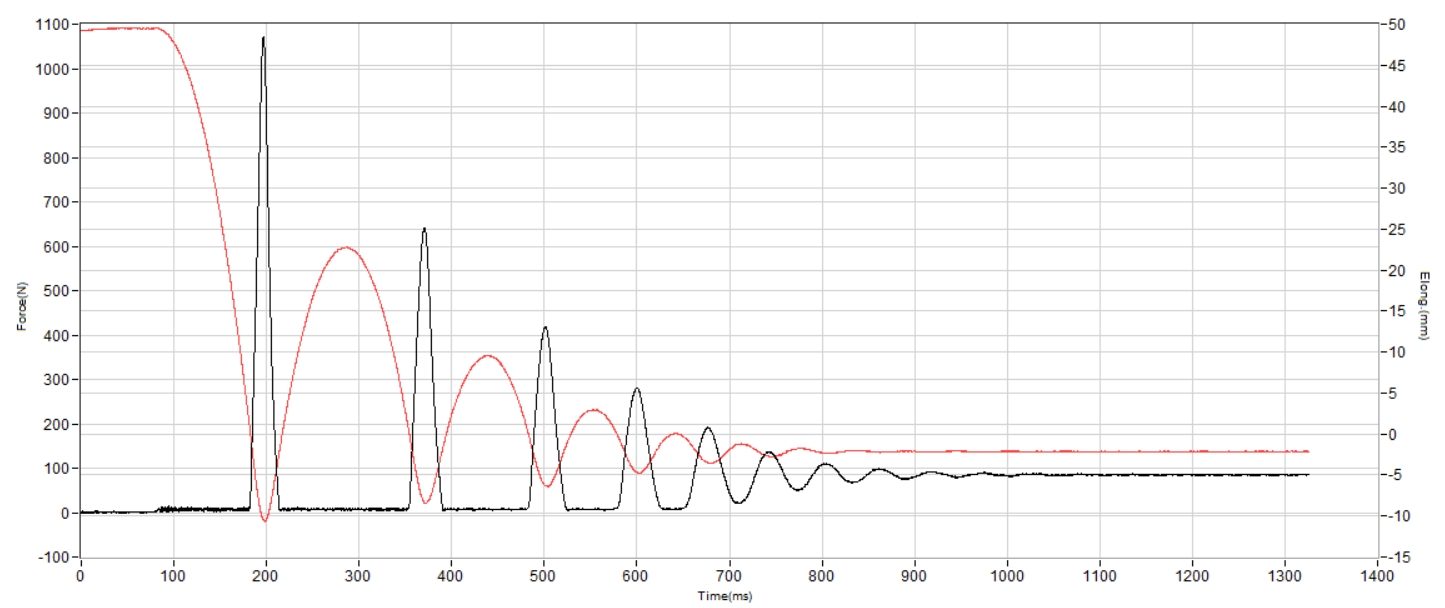
| Trace 3 | 125 SA |
| Average | 129 SA |
Energy return
Energy return isn’t impressive. In fact, it falls below average—but that’s expected in a budget-friendly shoe. Our ASTM F1976 test measured just 49.8% in the heel, so don’t count on a bouncy ride.
| Trace 3 | 49.8% |
| Average | 58.5% |
Heel stack
After verifying the weight, we used our digital calipers to determine the actual stack height of the Trace 3. Initially, it appeared that Brooks maintained the same midsole as its predecessor, and our measurements confirmed this with a 34.1 mm stack height in the heel.
This finding suggests, as we suspected, that the Trace 3 is once again primarily designed for heel strikers.
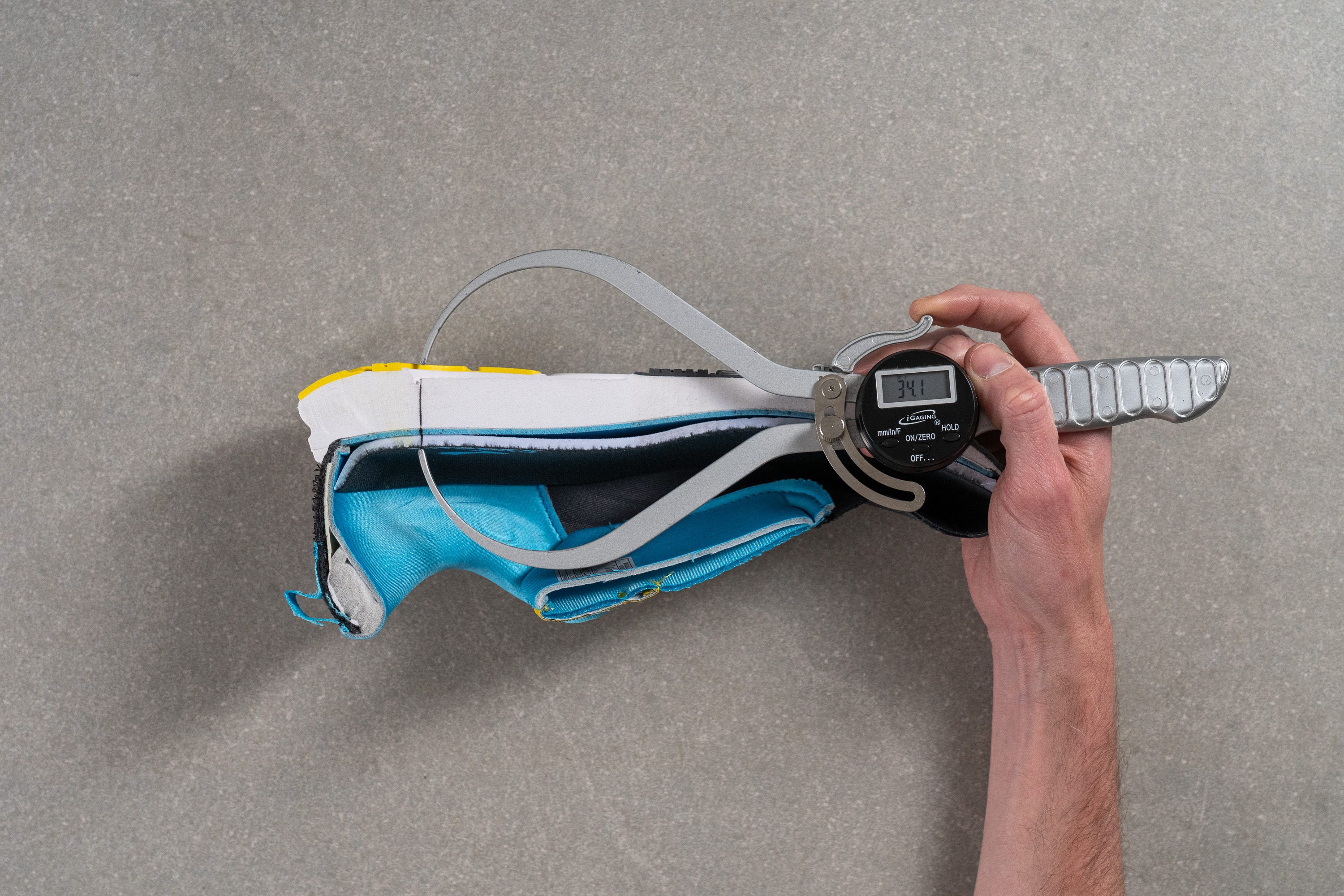
| Trace 3 | 34.1 mm |
| Average | 34.8 mm |
Forefoot stack
Our initial impressions were validated upon taking the second measurement. The forefoot cushioning is notably limited compared with the forefoot, measuring just 22.2 mm.
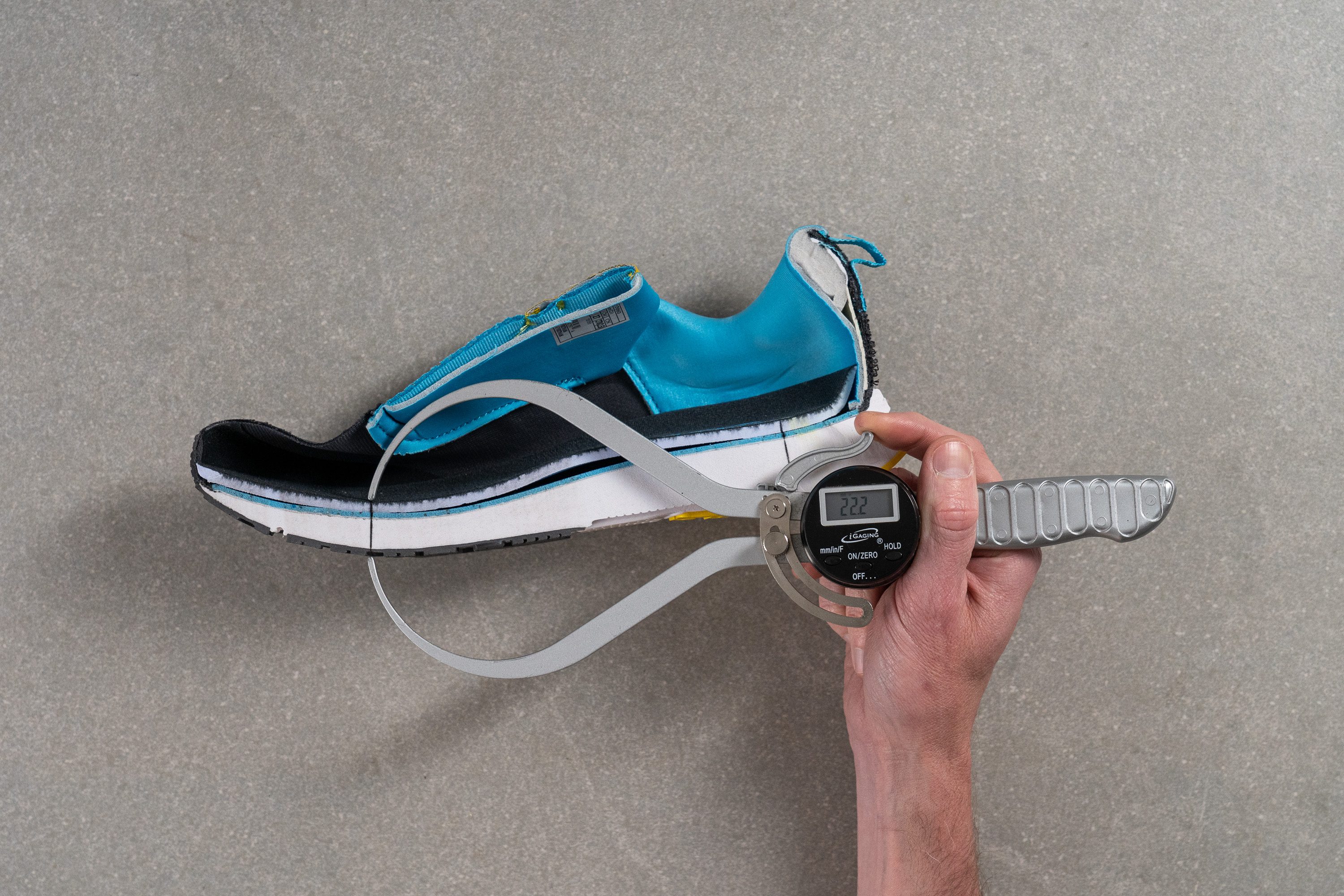
| Trace 3 | 22.2 mm |
| Average | 26.2 mm |
Drop
This measurement confirms that the Trace 3 has an actual 11.9-mm drop, once again making it ideal for heel strikers.
We were also pleasantly surprised to find that the stated drop by Brooks was 12 mm, meaning we observed only a 0.1 mm deviation by following World Athletics guidelines. This accuracy is impressive, as we typically encounter much larger discrepancies.
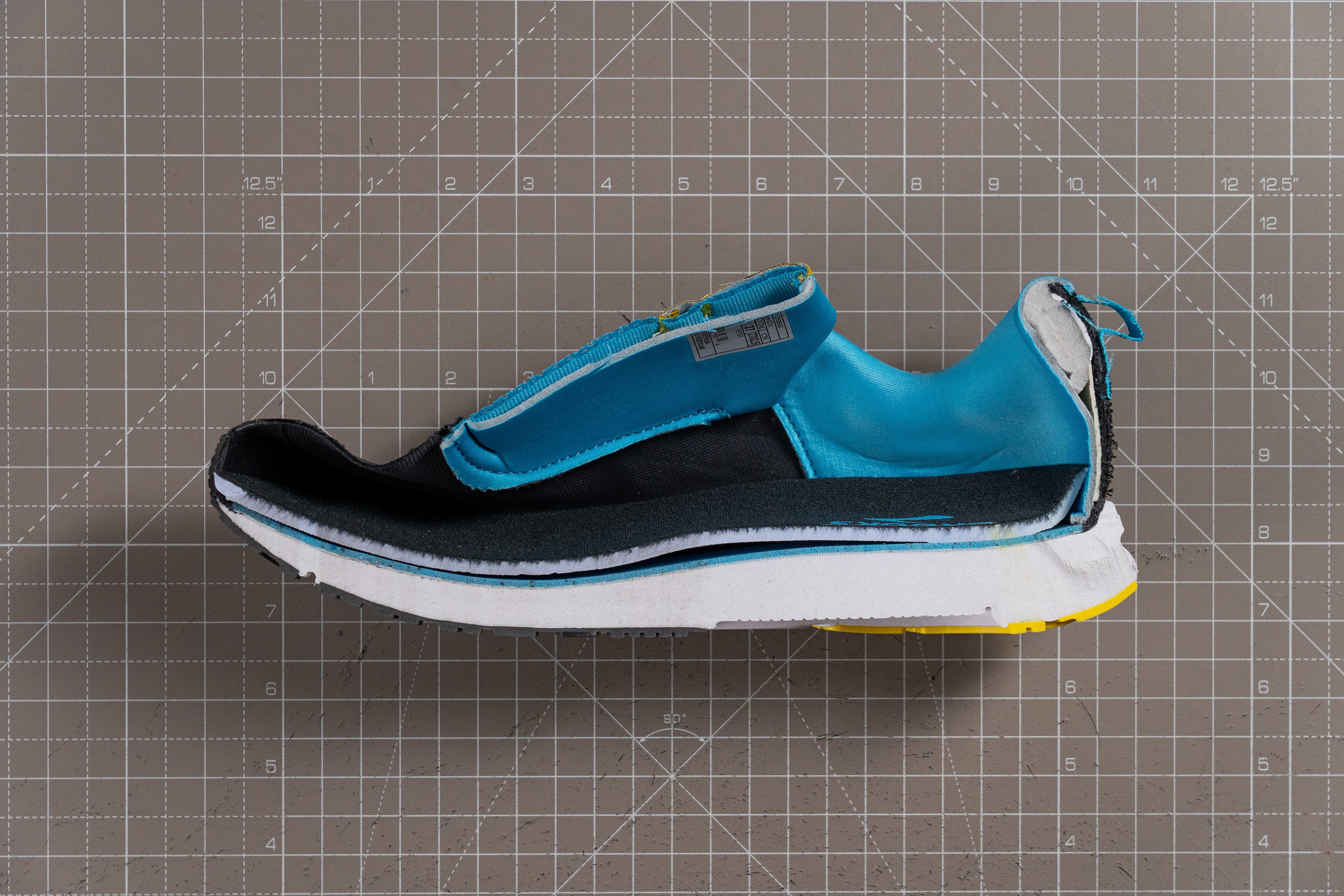
| Trace 3 | 11.9 mm |
| Average | 8.6 mm |
Midsole softness
Despite some minor drawbacks in this update like weight, a major incentive to switch from the Trace 2 to version 3 is the improved midsole.
Brooks has upgraded from the BioMoGo DNA foam to its superior DNA Loft cushioning—a better EVA previously found only in their more expensive models, now available at an accessible price of just $100.
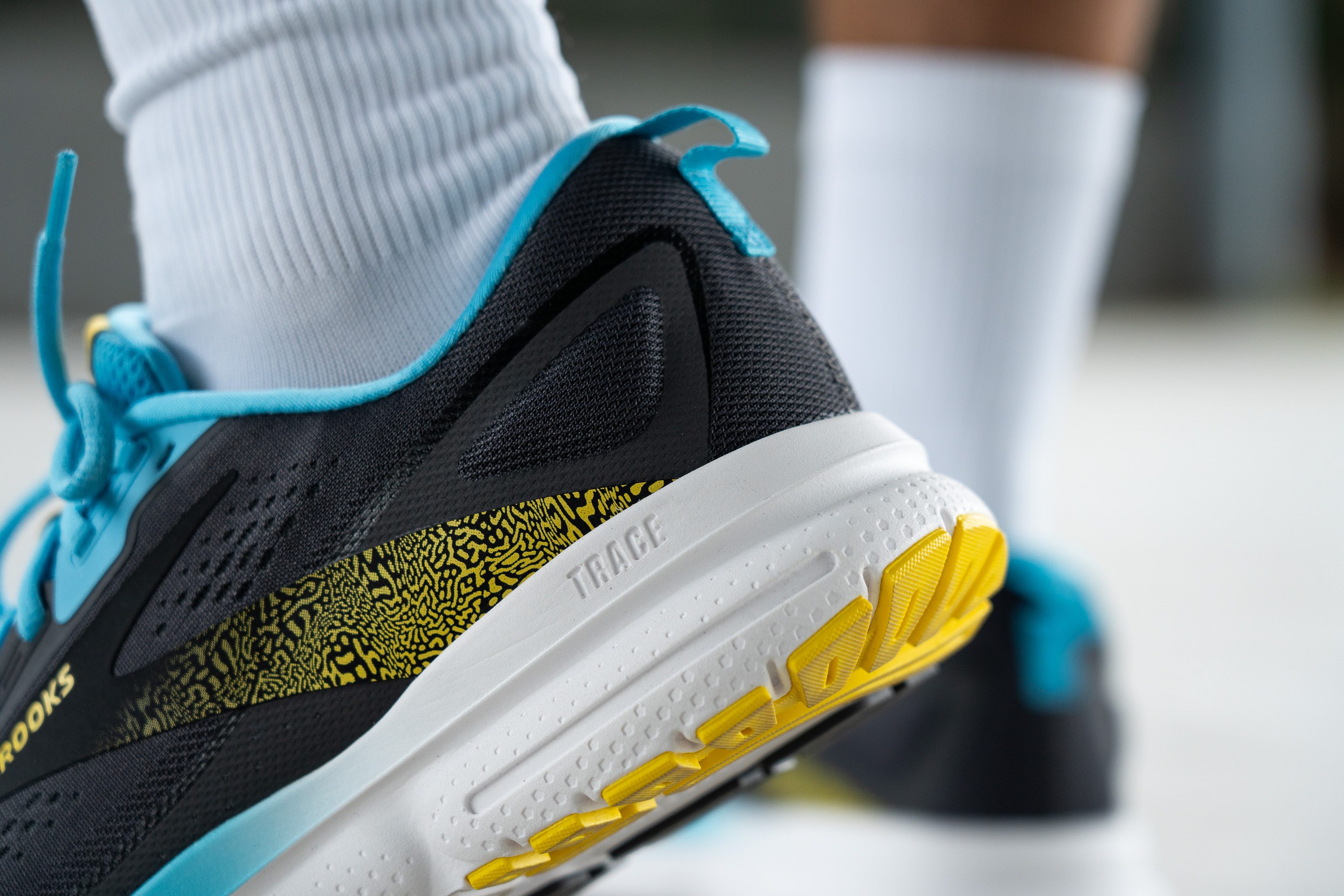
The DNA Loft foam is noticeably bouncier than BioMoGo DNA, enhancing our running experience. However, the feel of the foam remains quite similar—not plush but balanced—and our durometer confirmed this with a reading of 24.5 HA.
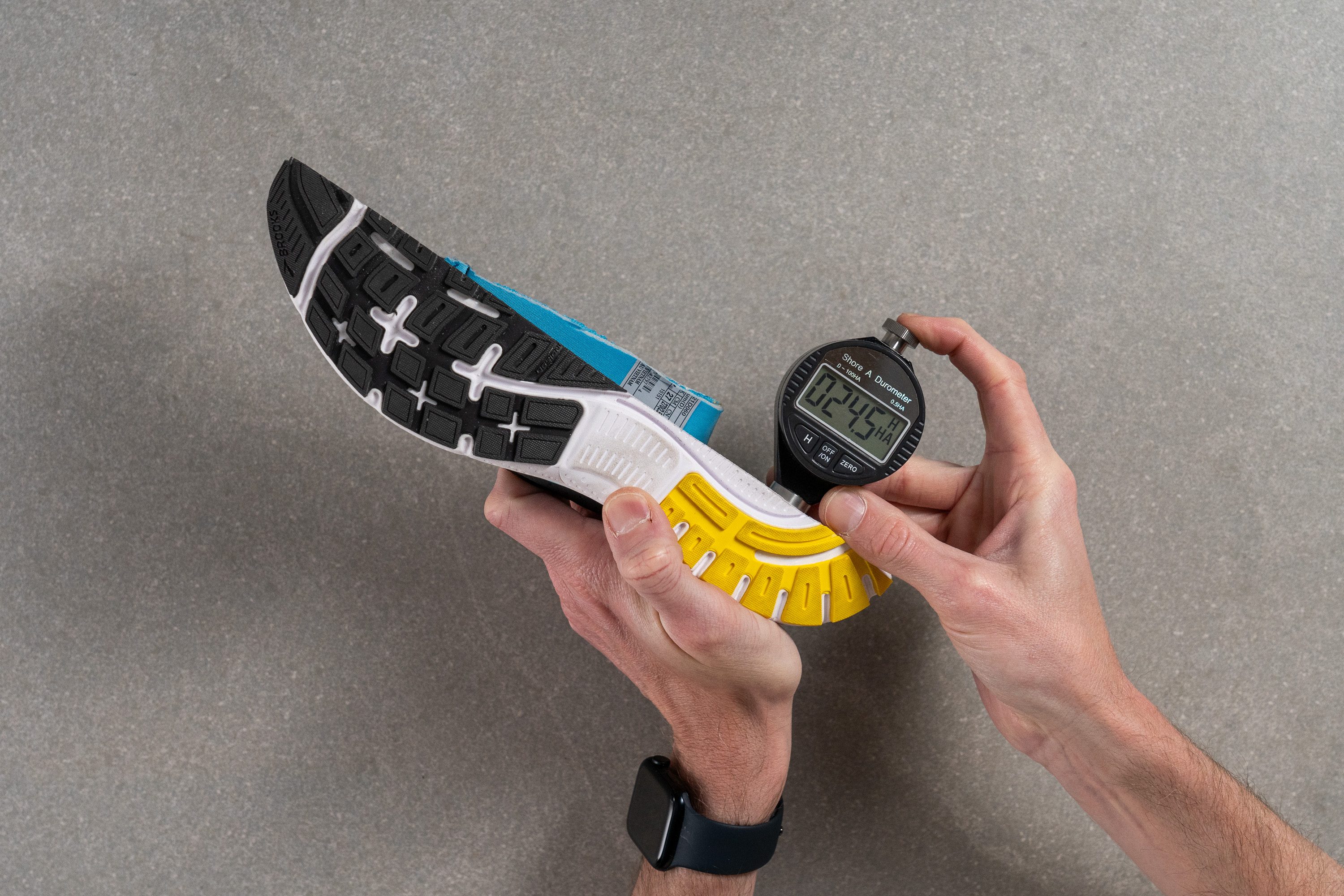
| Trace 3 | 24.5 HA |
| Average | 20.4 HA |
Size and fit
Size
Brooks Trace 3 fits true to size (267 votes).
Width / Fit
We were pleased to discover that Brooks has addressed one of the major downsides of the Trace 2 for some runners—its snug fit. The width now sits well over average at 97.4 mm, making it more accommodating and versatile for a wider range of runners.
Additionally, it's great to see that Brooks offers again this shoe in 2E (Wide) widths in select countries, enhancing the fit of those needing a bit more room.

| Trace 3 | 97.4 mm |
| Average | 95.1 mm |
Toebox width
To gain a more precise insight into the shoe's fit, we conducted a second measurement in the big toe area. This measurement yielded 74.8 mm, indicating an average taper in the toebox, not overly pronounced as in other Brooks shoes.
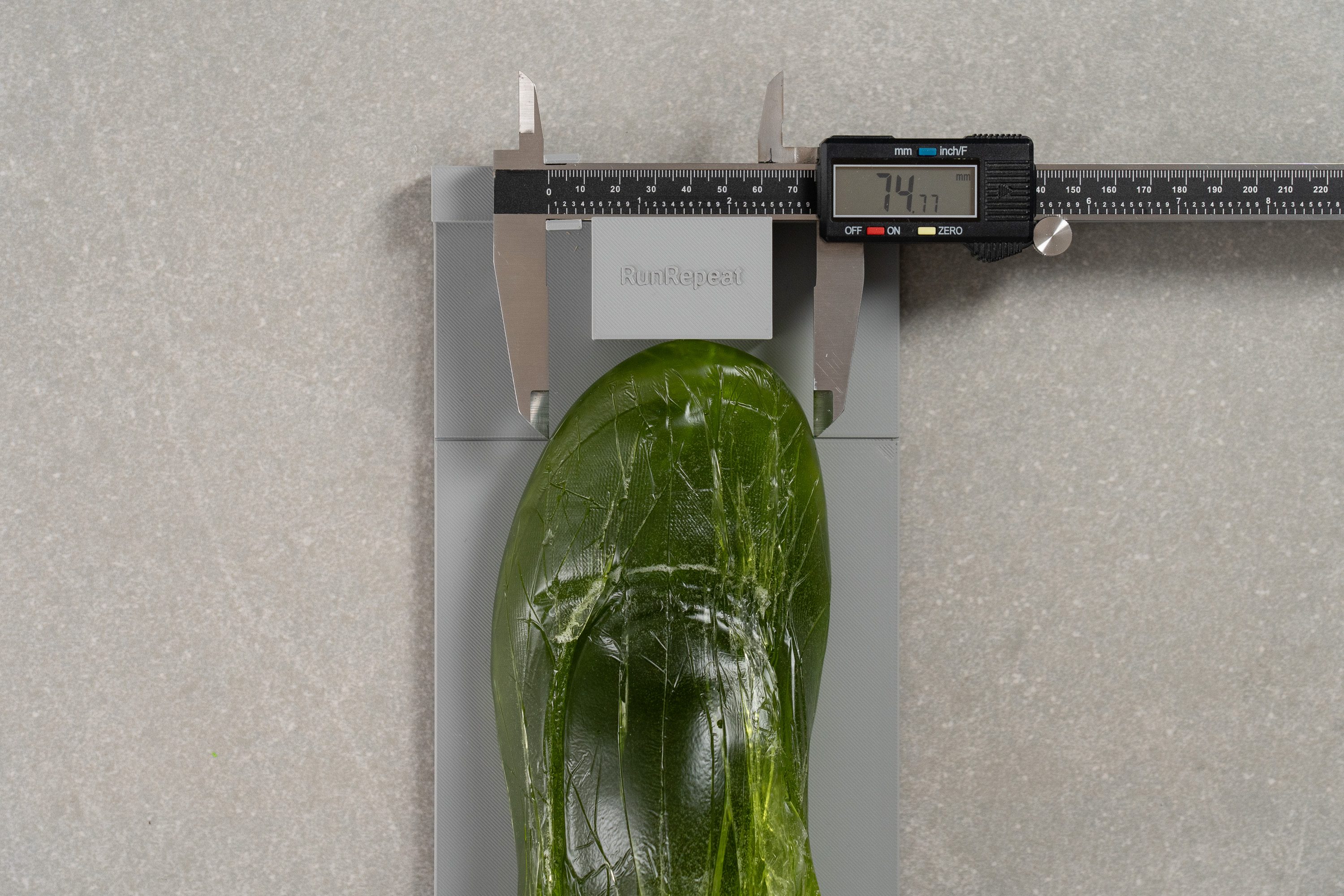
| Trace 3 | 74.8 mm |
| Average | 73.2 mm |
Toebox height
Brooks has broadened the fit horizontally, but vertically, there’s still room for improvement for runners needing a high-volume upper. We measured just 25.9 mm—below the average and slightly restrictive for upward toe movement.
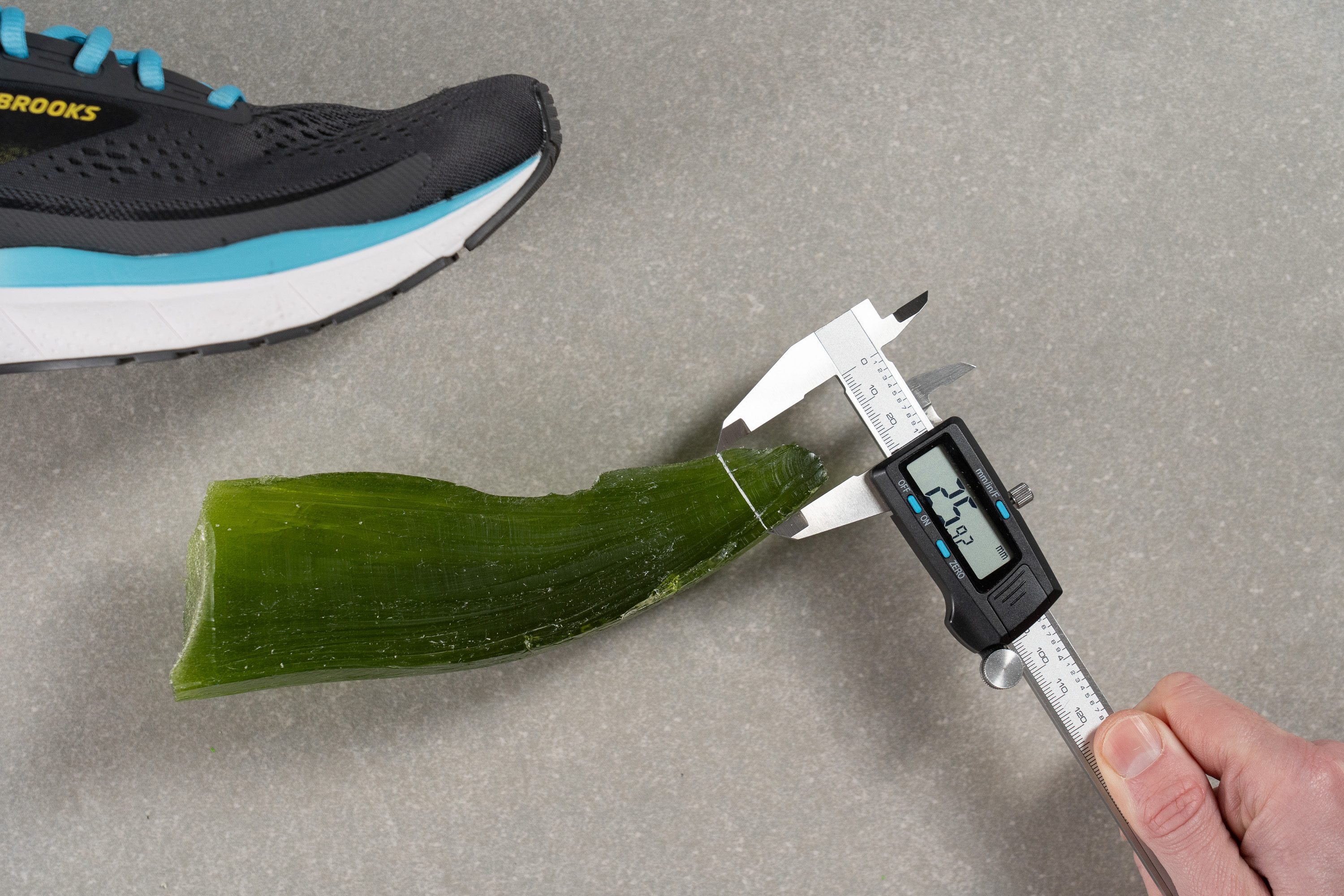
| Trace 3 | 25.9 mm |
| Average | 27.1 mm |
Traction / Grip
Traction test
Choosing hard rubber for the outsole, we discovered that Brooks definitely compromised the shoe's grip on wet roads.
Checking its forefoot friction on a wet slab of concrete at a 7-degree angle with 500N of force applied, the Trace 3 returned a fairly low friction score of 0.34. This increases chances of sliding and skidding if you accelerate, take a sharp turn, or go downhill on wet concrete.
| Trace 3 | 0.34 |
| Average | 0.48 |
Outsole design
The outsole closely resembles the previous model with only minor changes. We found that it offers extensive rubber coverage and multiple cutouts to enhance flexibility.
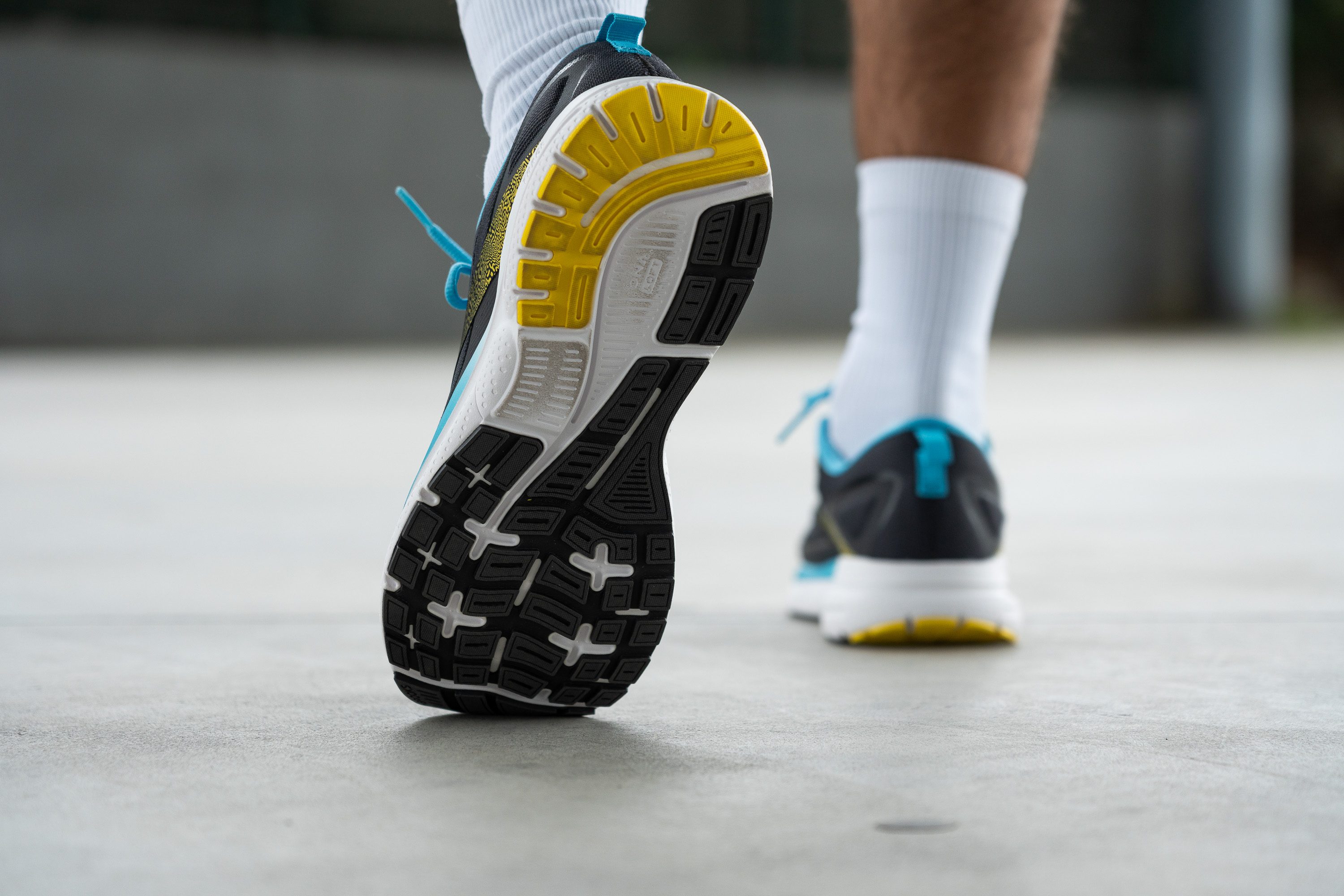
Flexibility / Stiffness
Creating a versatile, do-it-all shoe suitable for running, walking, or even grocery shopping requires excellent longitudinal flexibility.
Thankfully, the Trace 3 excels in this area due to its multiple outsole cutouts, which enhance its flexibility. In our 30-degree bend test, it required only 11.9N to bend, indicating a fantastic level of flex for such versatile use.
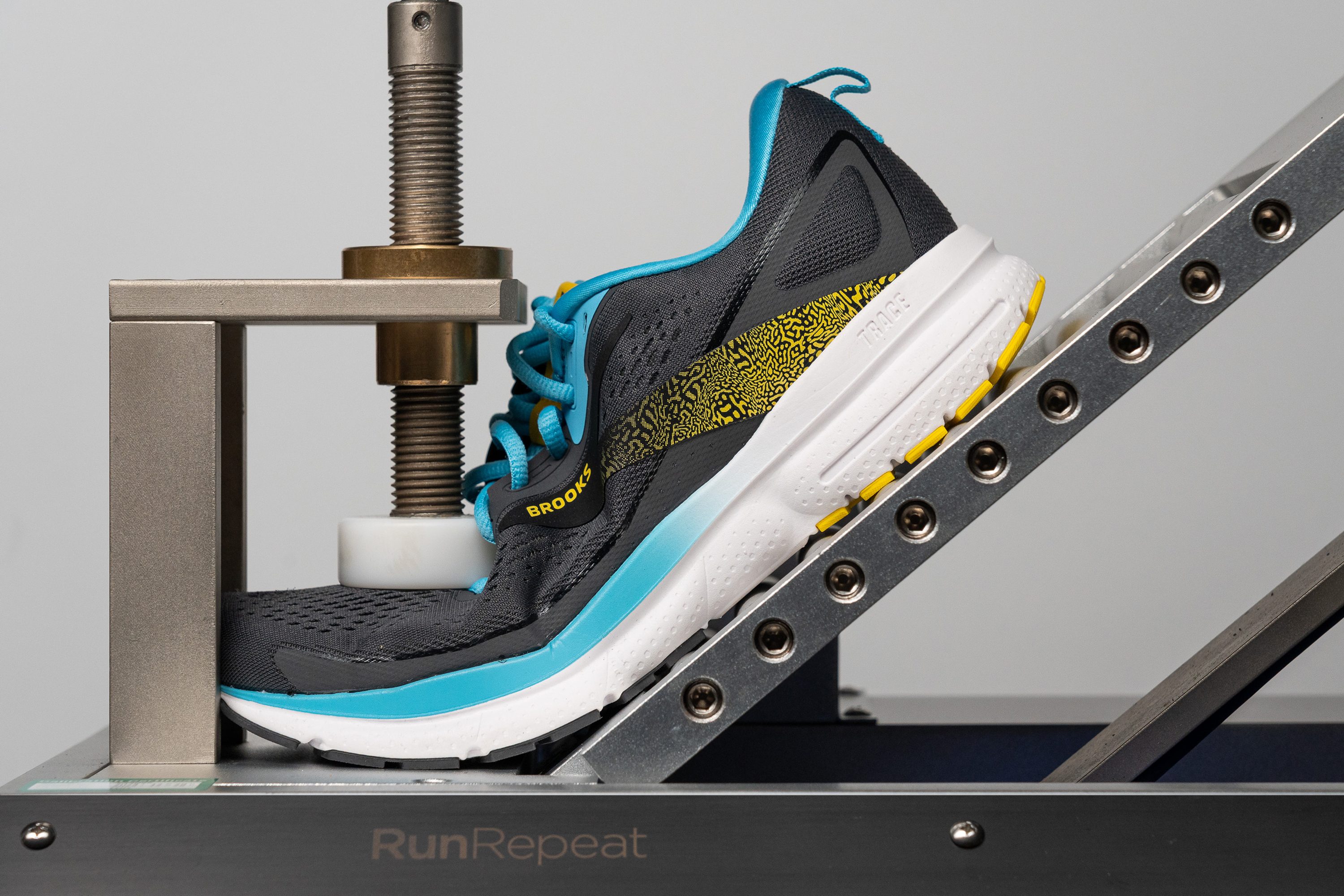
| Trace 3 | 11.9N |
| Average | 15.3N |
Weight
One of the attributes we consistently admire in the Trace series is its remarkable lightness. The previous model tipped our scales at just 8.8 oz or 249g, and although this version is slightly heavier at 9.1 oz or 257g, the increase is nearly imperceptible.
Despite this minor weight gain, we're still thrilled with its lightness compared to many of its rivals—it remains a standout feature for sure.
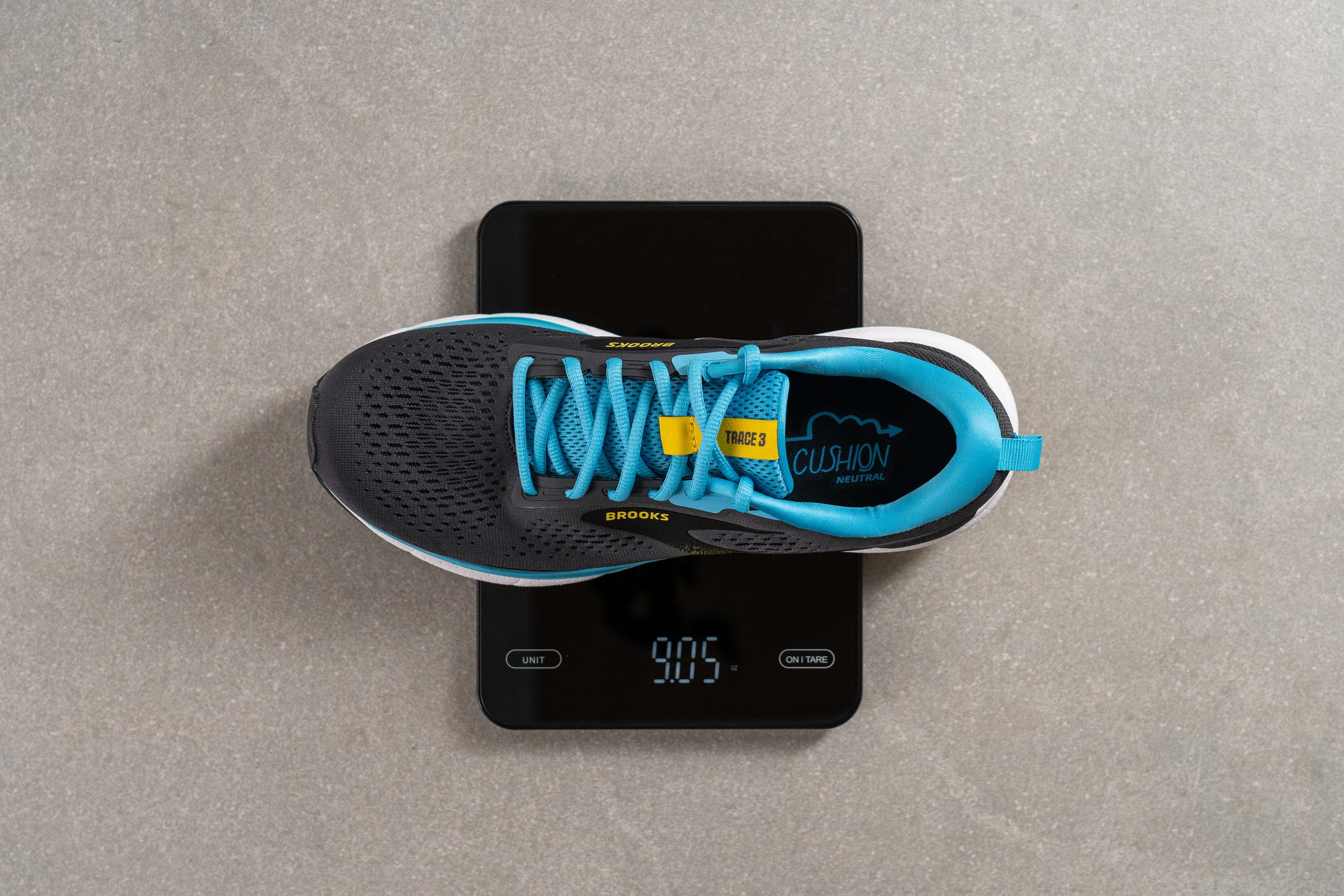
| Trace 3 | 9.1 oz (257g) |
| Average | 9.3 oz (264g) |
Breathability
Our initial test with the Trace 3 was done with a smoke-pumping machine to evaluate the shoe's ventilation.
While it didn't match the top-notch breathability of the Trace 2, we were satisfied. This change could benefit those in cooler climates, providing extra warmth, though it might cause some overheating in hotter conditions.
We then used a light to examine the upper, which Brooks has peppered with numerous ventilation holes. Unfortunately, these holes didn't significantly enhance airflow.
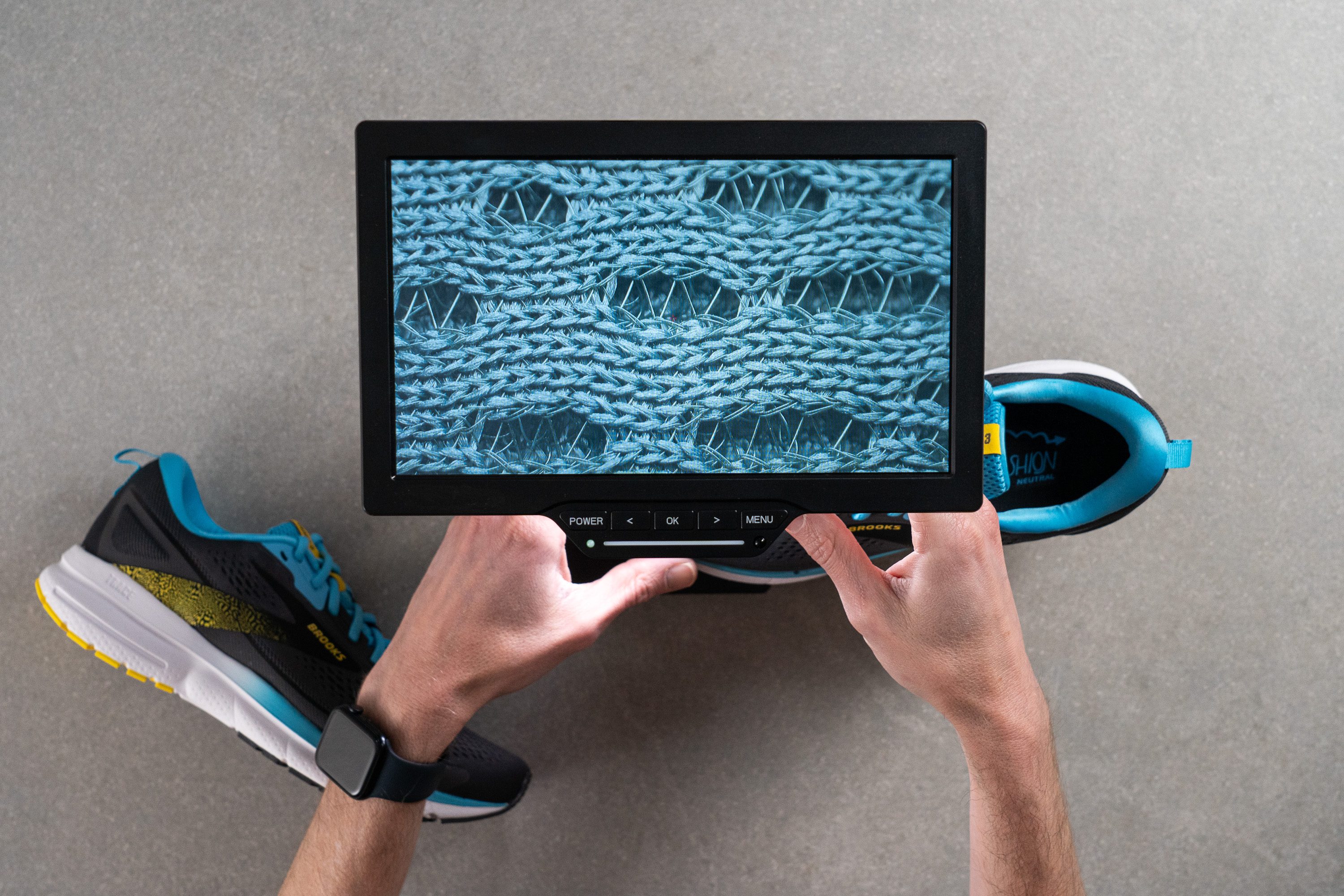
Upon closer inspection under a microscope, we discovered why—beneath the holes, a layer of fabric hinders air escape.
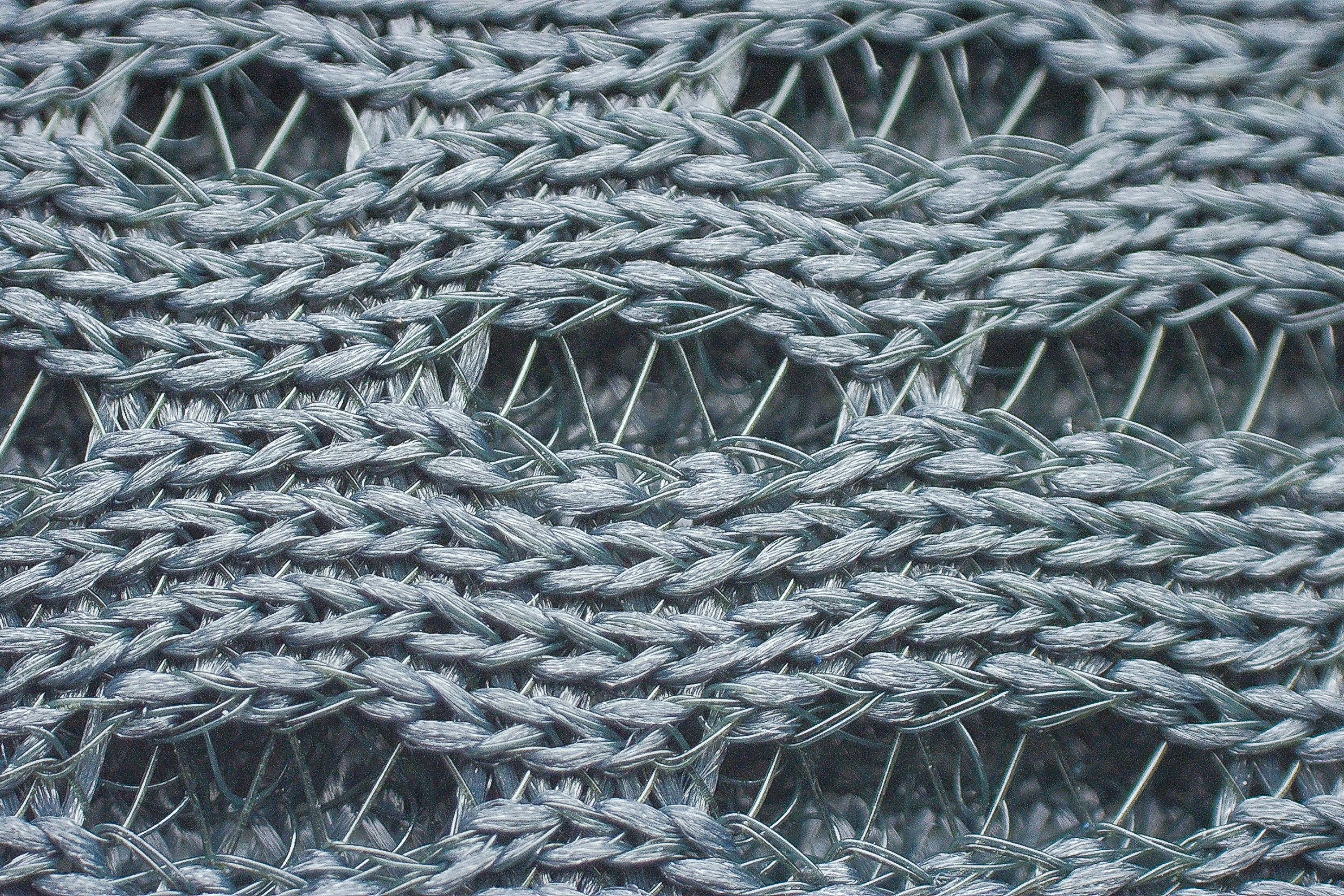
Our final examination involved physically handling the upper to assess its materials and padding. As expected with its lower price point, the materials reflect cost-saving choices.
Nevertheless, the shoe offers substantial padding for comfort, particularly around the heel, and we were content.
| Trace 3 | 3 |
| Average | 3.7 |
Stability
Lateral stability test
Stability in the Trace 3 is adequate, relying mainly on TPU overlays in the upper to provide lateral foot support. However, it lacks significant midsole sidewalls, rails, or other robust stability features.
Consequently, we recommend the Trace 3 primarily for neutral runners who do not have major stability needs. Those with moderate pronation, particularly heel strikers, might also find it suitable.
Torsional rigidity
In our hands-on evaluation, we manipulated the Trace 3, bending and twisting it.
It flexed a bit under pressure, leading us to rate it a 3 out of 5 on our scale. This score reflects its moderate resistance to bending and twisting forces from our hands.
| Trace 3 | 3 |
| Average | 3.5 |
Heel counter stiffness
The heel counter in the Trace 3 has been slightly adjusted from the previous version—upgraded from a 3/5 to a 4/5 rating for improved support for heel strikers.
This change, though minor, is a positive modification for a shoe with a high heel-to-toe drop that's catered to beginners.
| Trace 3 | 4 |
| Average | 2.9 |
Midsole width - forefoot
Ignoring minor manufacturing differences, we can confidently state that the Brooks Trace 3 maintains the same dimensions as its predecessor. Those seeking a similar ride but with an upgraded foam will find exactly that.
We recorded a width of 113.3 mm in the forefoot, which is quite average and doesn't stand out as exceptional.
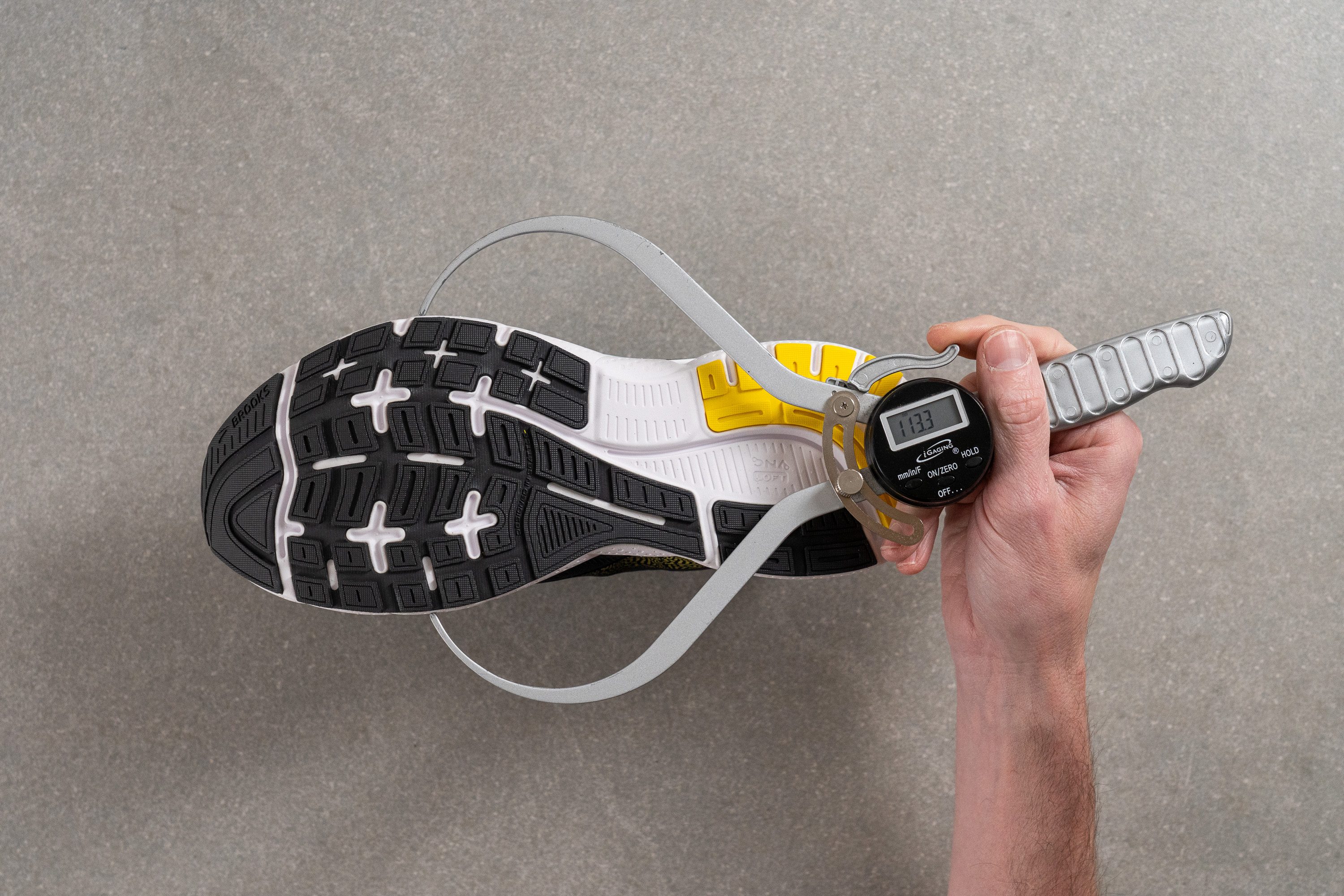
| Trace 3 | 113.3 mm |
| Average | 114.4 mm |
Midsole width - heel
Moving to the heel, we clocked it at 93.1 mm, which again underscores this shoe as a great option for those with a heel-striking technique.
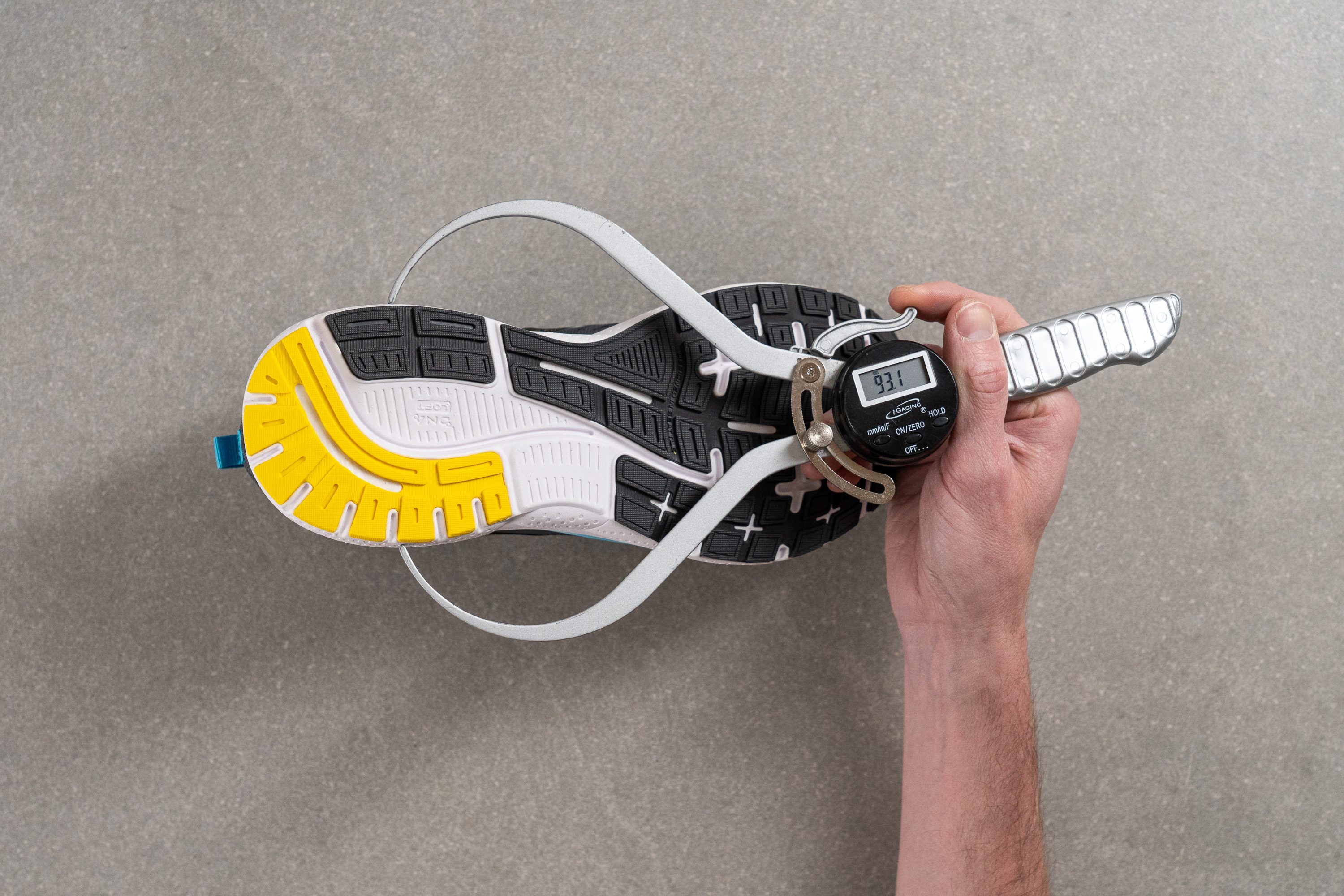
| Trace 3 | 93.1 mm |
| Average | 90.7 mm |
Durability
Toebox durability
In our lab tests, we confirmed that Brooks' new engineered mesh is less breathable, raising concerns about its performance. To assess its durability, we rigorously tested the Trace's upper with our Dremel tool.
The results were disappointing—the tool quickly produced a large, clean hole in the material. Consequently, we had no other choice but to give it a poor rating of 1/5, reflecting its underwhelming resilience.
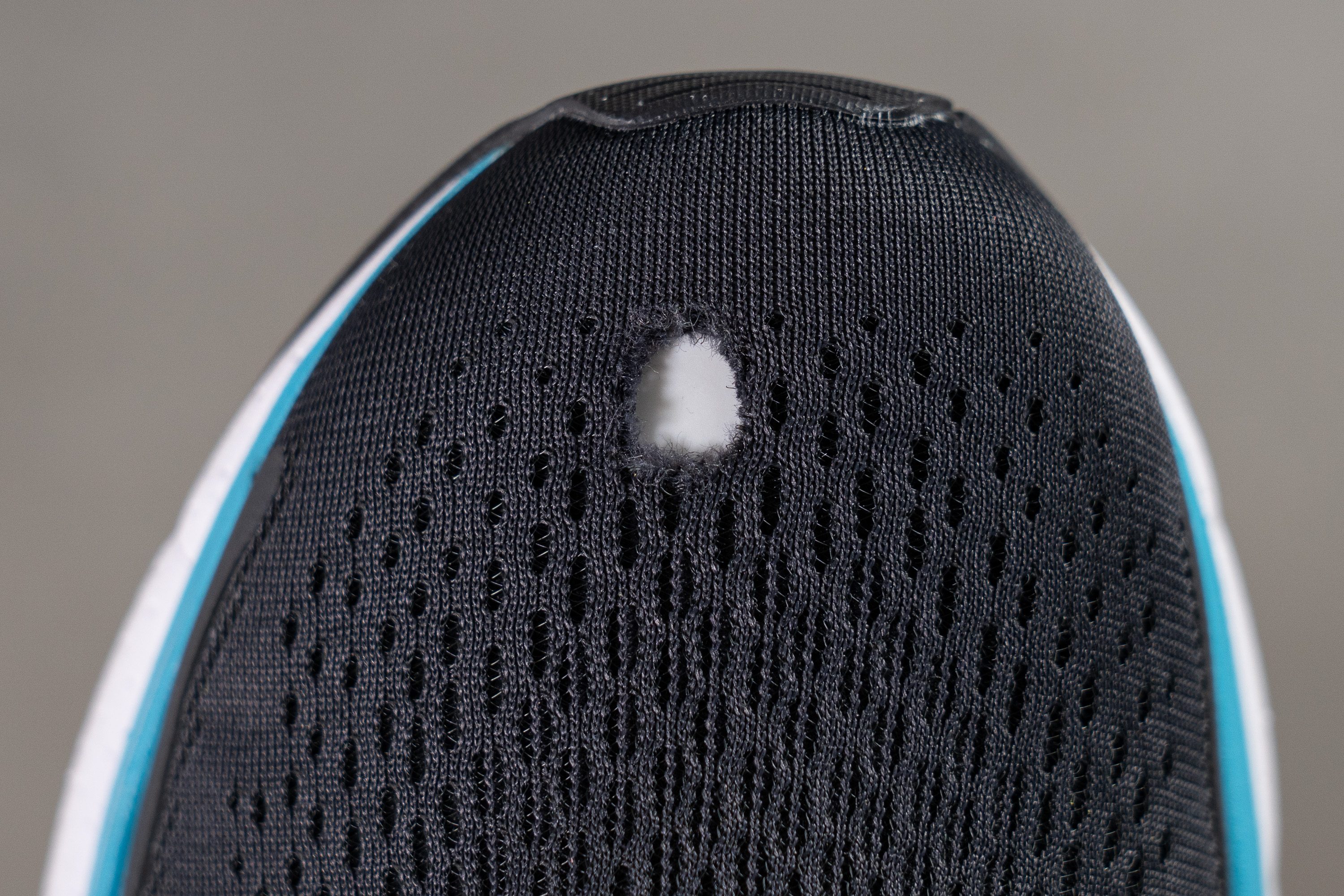
| Trace 3 | 1 |
| Average | 2.6 |
Heel padding durability
After evaluating the upper, we continued our tests, directing the Dremel towards the heel padding—a key concern for many runners.
To our delight, we discovered significant improvement! The heel padding proved to be highly resilient, earning a great 4/5 from our team. This enhanced durability in the rear left us quite satisfied.
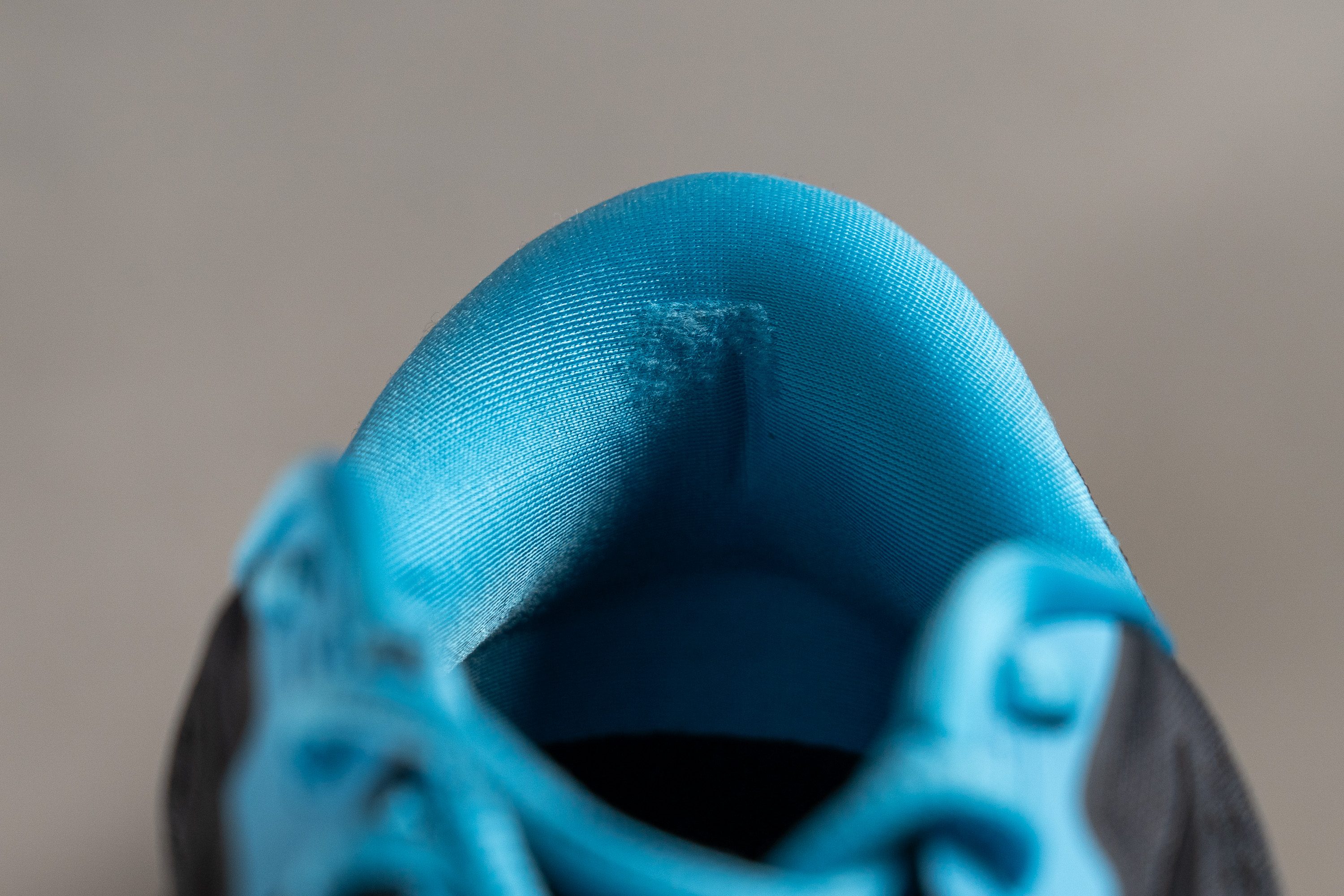
| Trace 3 | 4 |
| Average | 3.4 |
Outsole durability
To push the limits, we increased the RPM on our Dremel for the third and final test.
Our findings reinforced our initial impressions—the rubber withstood the challenge remarkably well, showing only a minor 0.6-mm indentation, which surpasses the performance of softer compounds. Nonetheless, this robustness sacrifices some traction, which, while adequate, is not exceptional by any means.
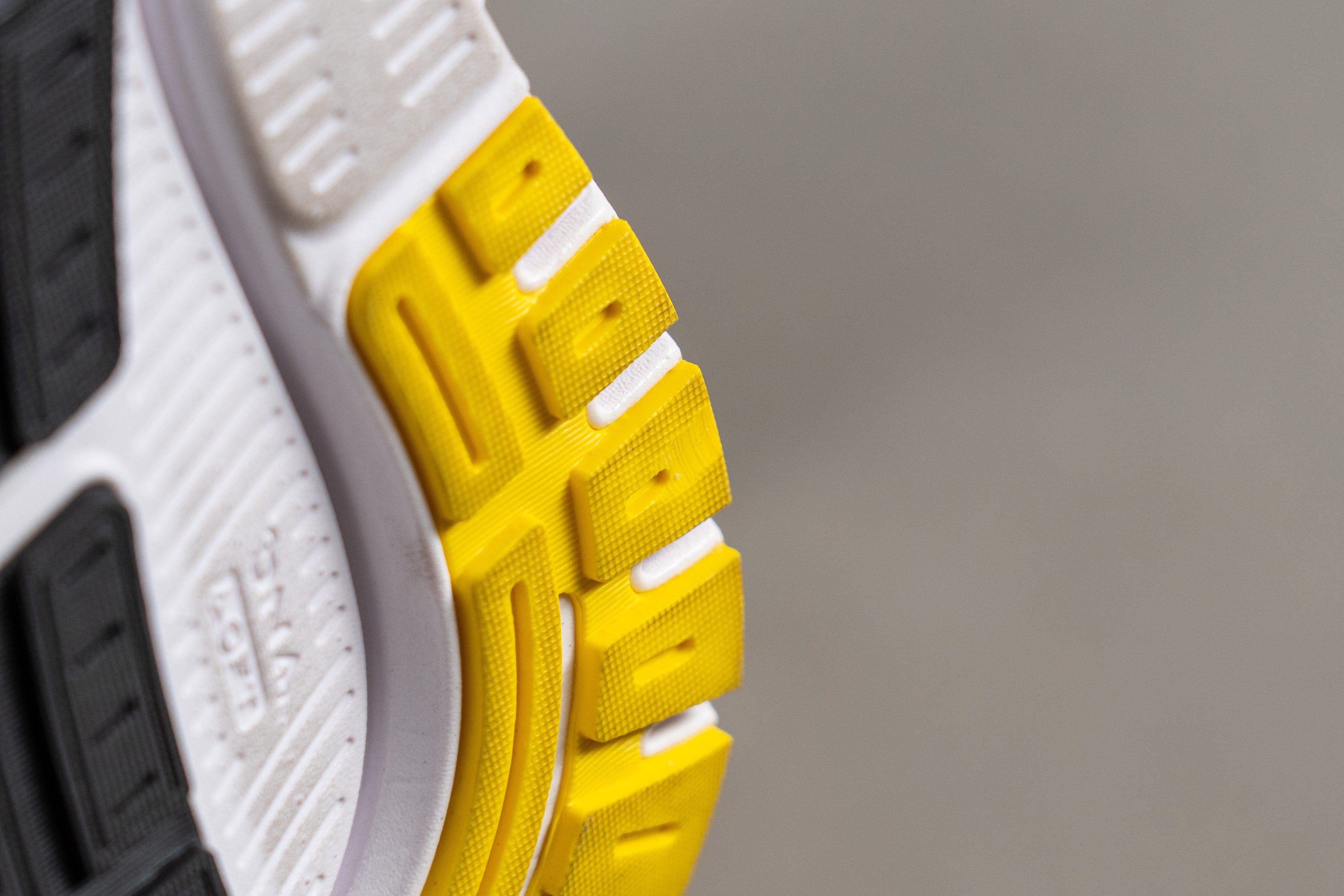
| Trace 3 | 0.6 mm |
| Average | 1.1 mm |
Outsole thickness
Our final evaluation of the outsole included measuring its thickness, a crucial factor in assessing durability. We were pleased to find a satisfactory thickness of 3.0 mm.
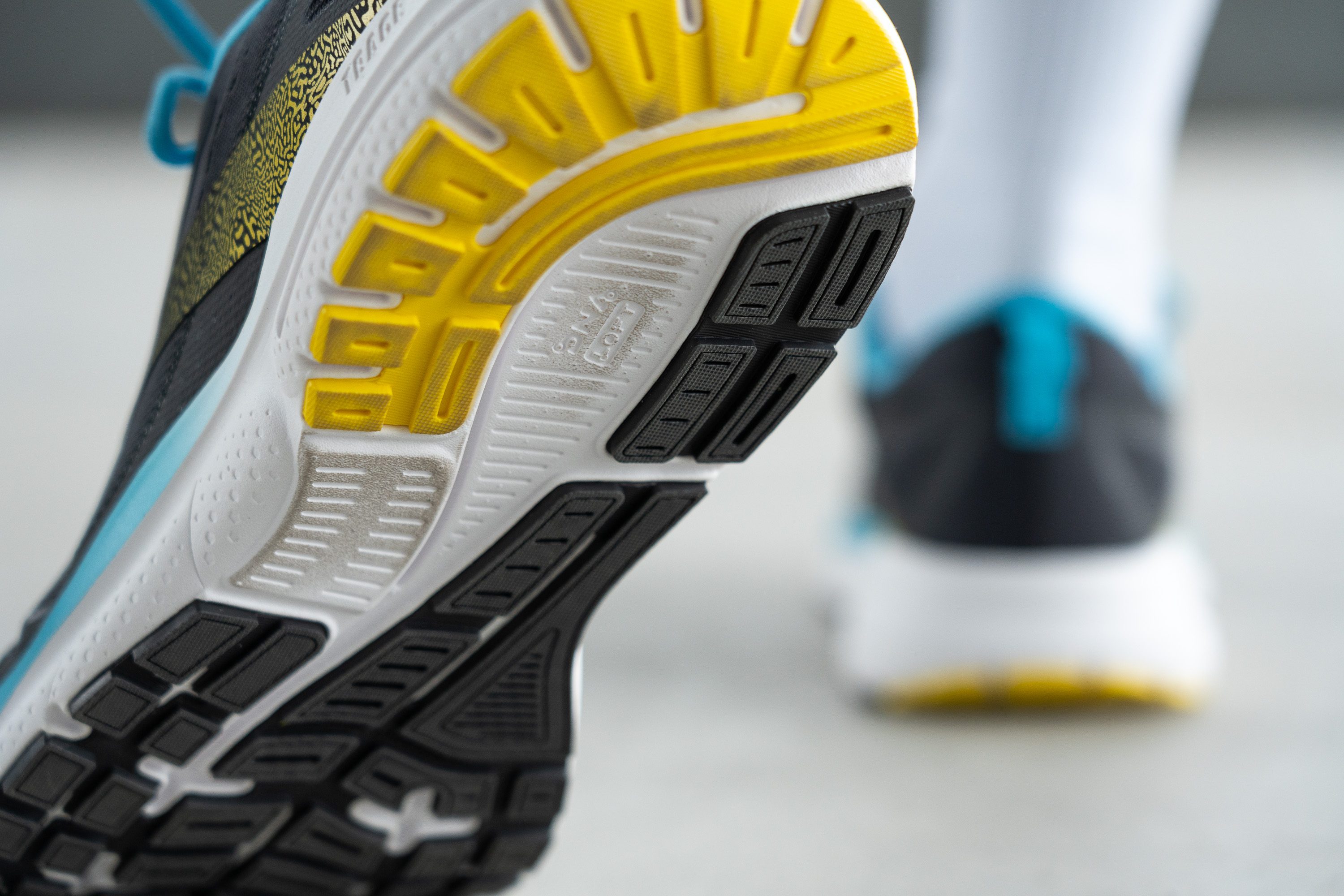
This marks a slight reduction from the previous version's 3.3 mm. Given the impressive durability we've observed, we believe the next Trace could effectively utilize a thickness of only 2 or 2.5 mm, which would also aid in reducing the shoe's overall weight.
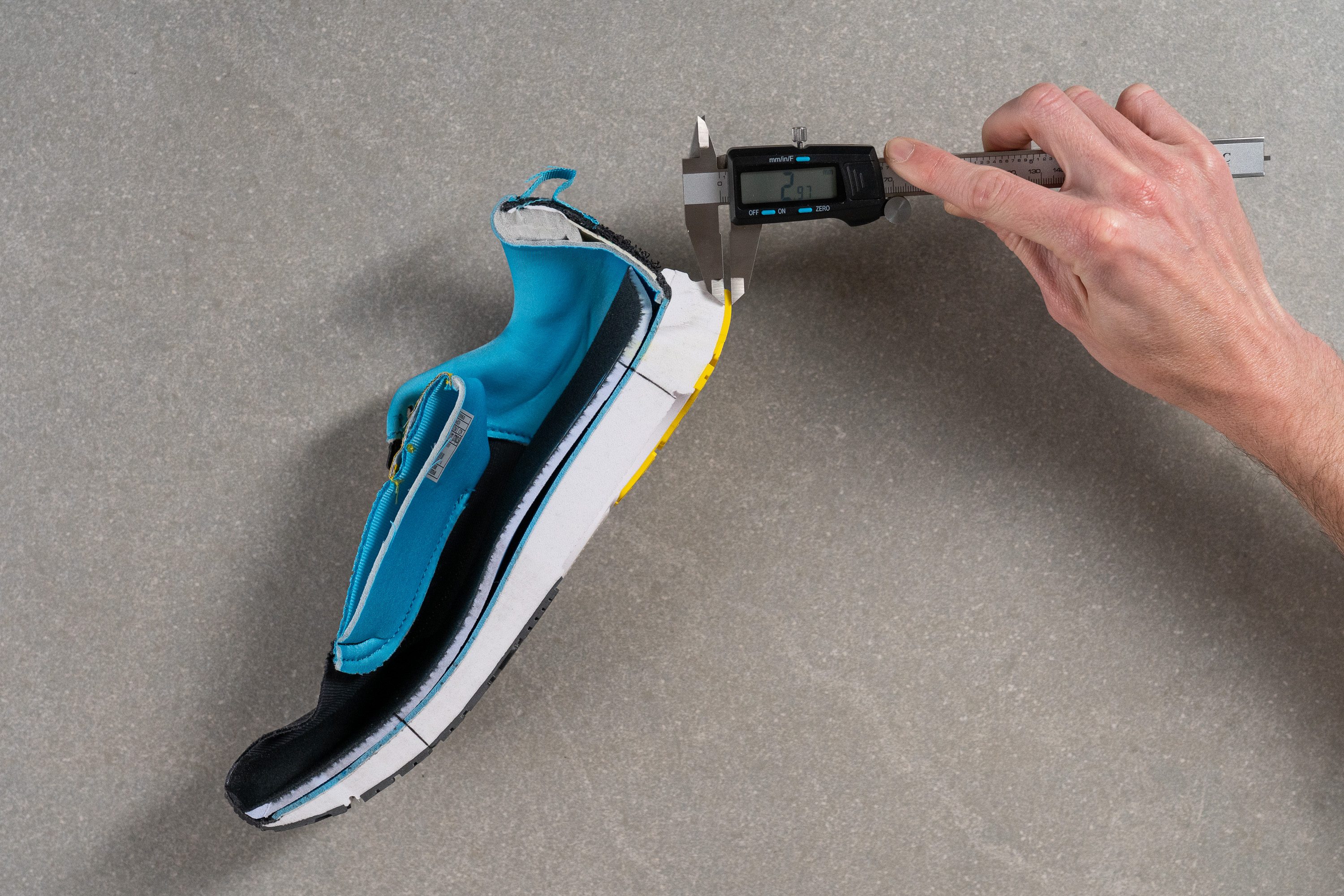
| Trace 3 | 3.0 mm |
| Average | 3.2 mm |
Misc
Insole thickness
The insole, crafted from EVA foam, features a substantial thickness of 5.1 mm.
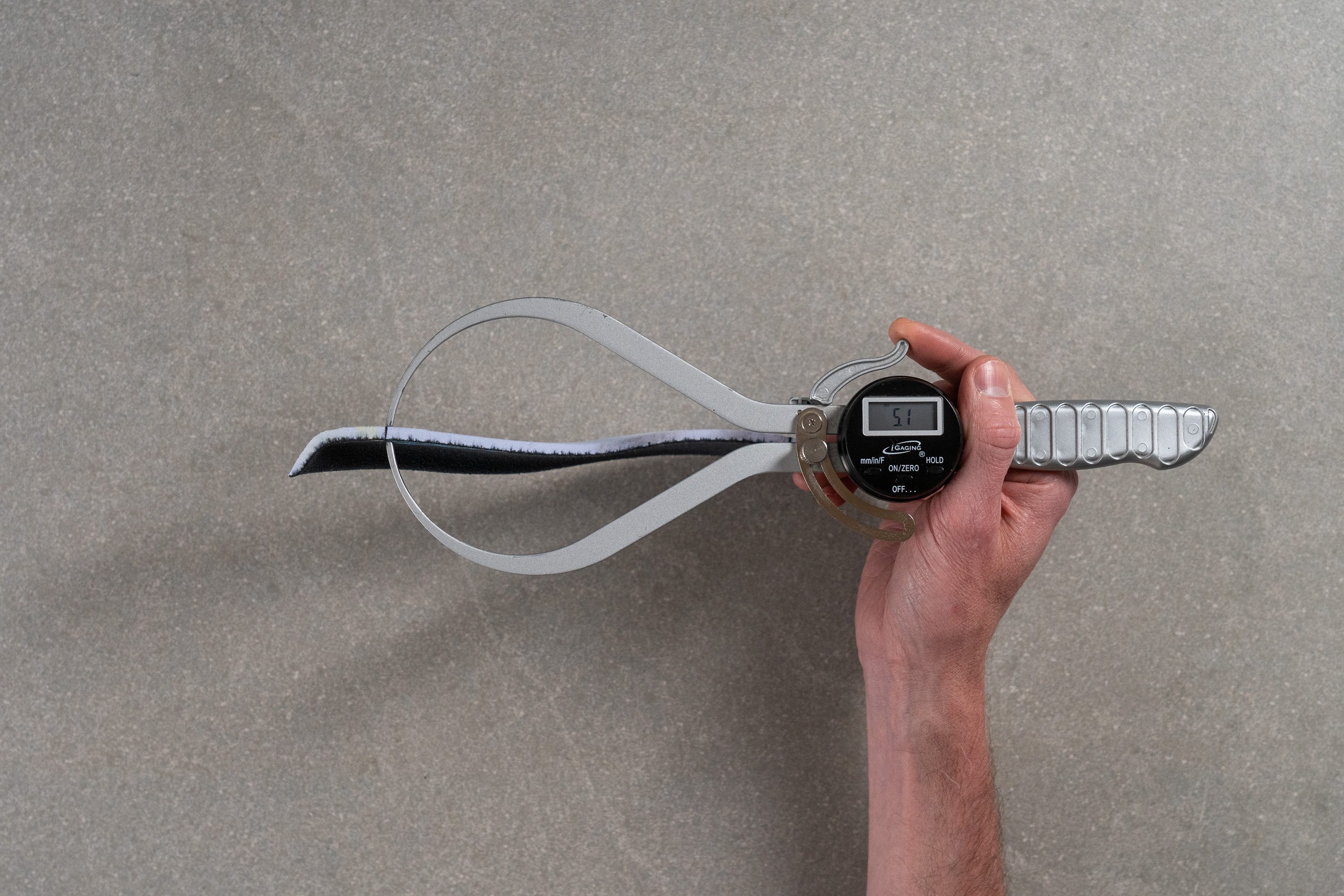
| Trace 3 | 5.1 mm |
| Average | 4.5 mm |
Removable insole
The insole isn't permanently attached and features average width, so this design choice simplifies the process of inserting custom orthotics or alternate footbeds.
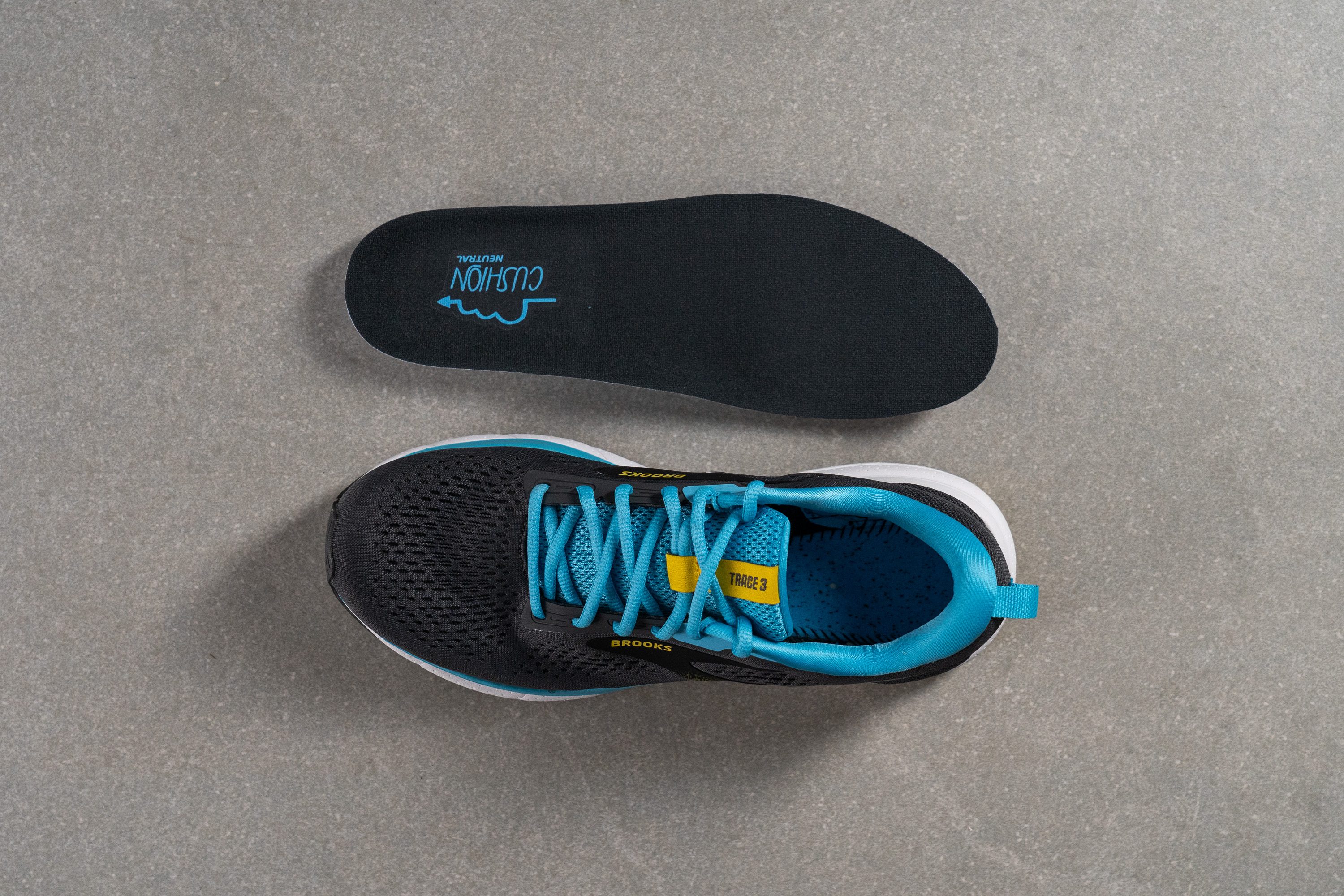
| Trace 3 | Yes |
Midsole softness in cold (%)
Given that DNA Loft is not merely plain EVA but a blend including rubber, we were optimistic about its performance in cold temperatures—a crucial factor as this shoe is better suited for chilly environments.
To confirm this, we placed the shoe in the freezer for 20 minutes and then measured again its softness with our durometer. The results were superb, showing an 11.8% increase to 27.4 HA, which is quite impressive for such a budget-friendly shoe.
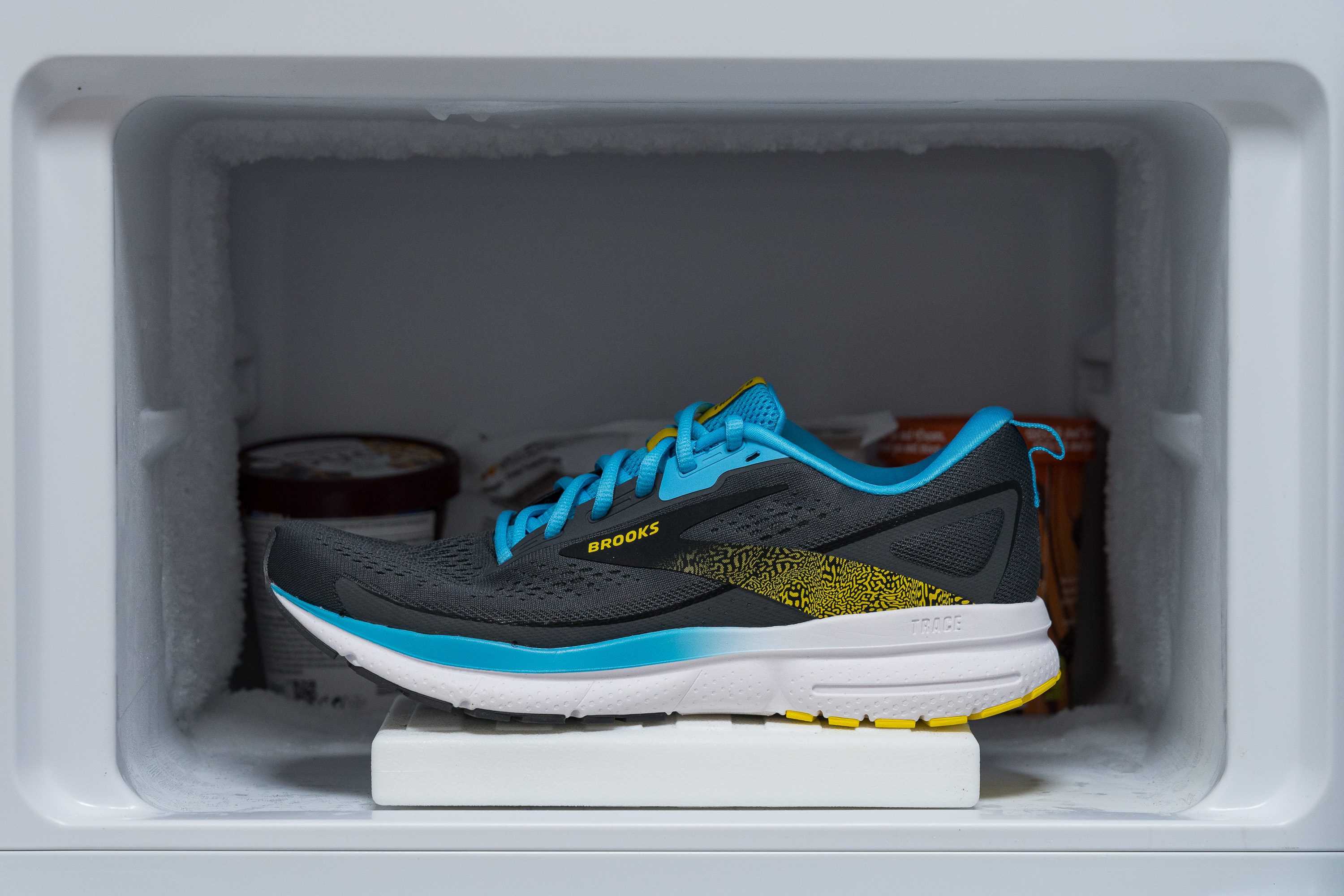
| Trace 3 | 12% |
| Average | 24% |
Reflective elements
The Trace 3 lacks reflective elements, but given its budget-friendly price, skipping some premium features is understandable—we're at peace with it!
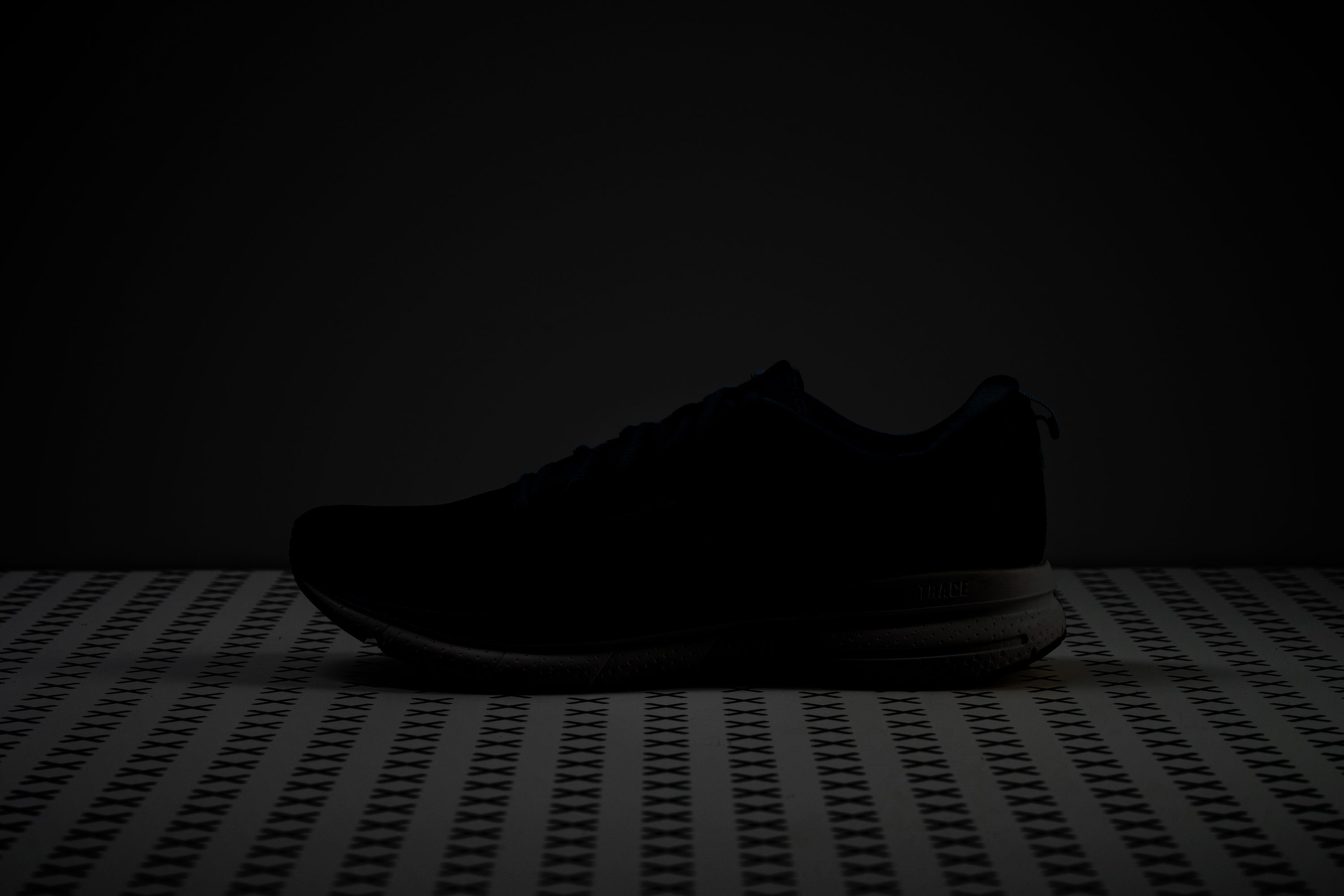
| Trace 3 | No |
Tongue padding
We measured the tongue thickness of the latest Brooks model and discovered a slight reduction in comfort due to their focus on decreasing weight.
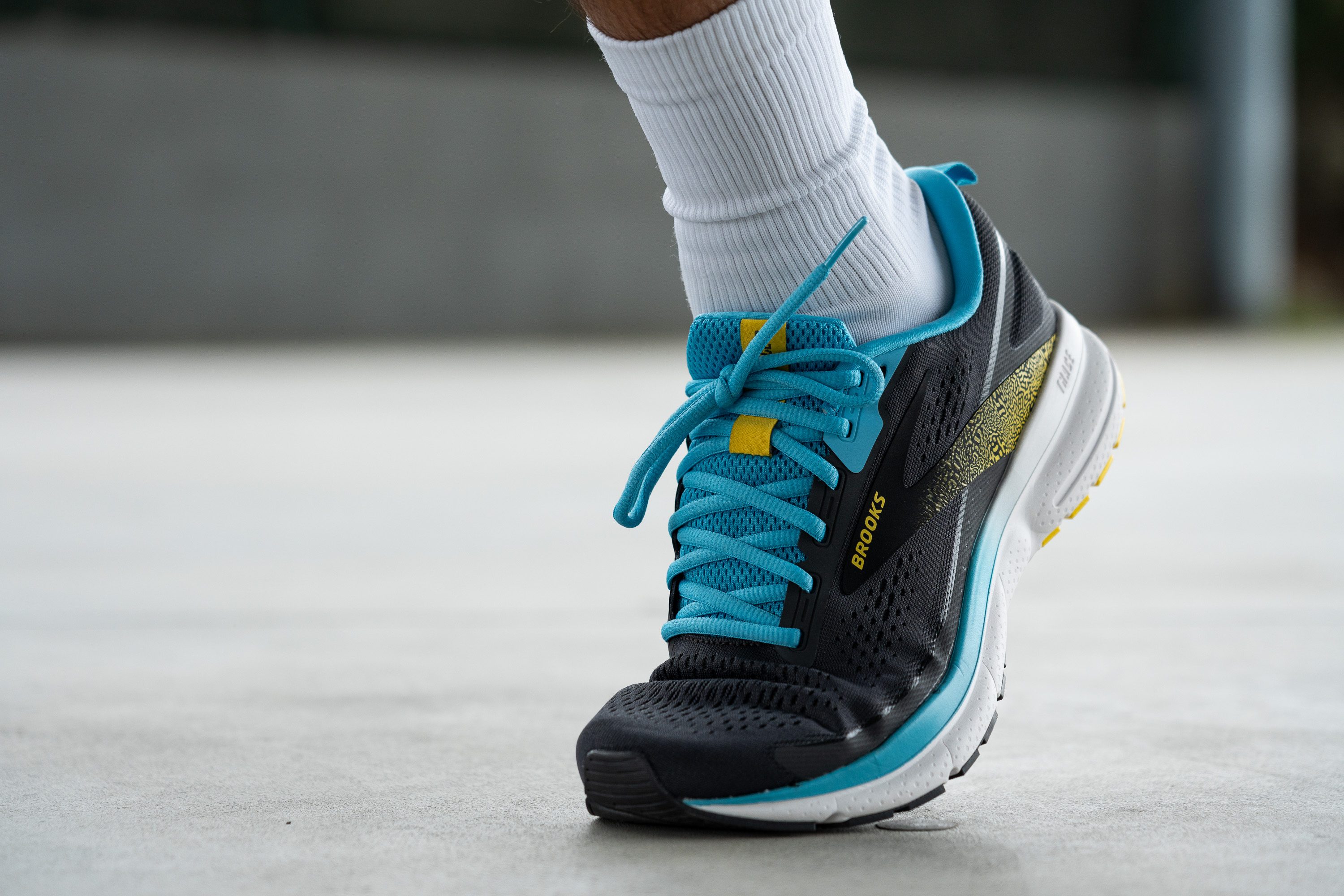
Our findings show that the tongue is 4.5 mm thick, slightly thinner than the 5.3 mm of its predecessor, v2.

| Trace 3 | 4.5 mm |
| Average | 5.8 mm |
Tongue: gusset type
The tongue is not gusseted, which is typical for a $100 shoe—no complaints from us on that front.

| Trace 3 | None |
Heel tab
In contrast to many current Brooks running shoes and most likely because of feedback from runners regarding the Trace 2, the third version surprises with a handy finger-loop heel tab—a delightful feature we didn't expect!
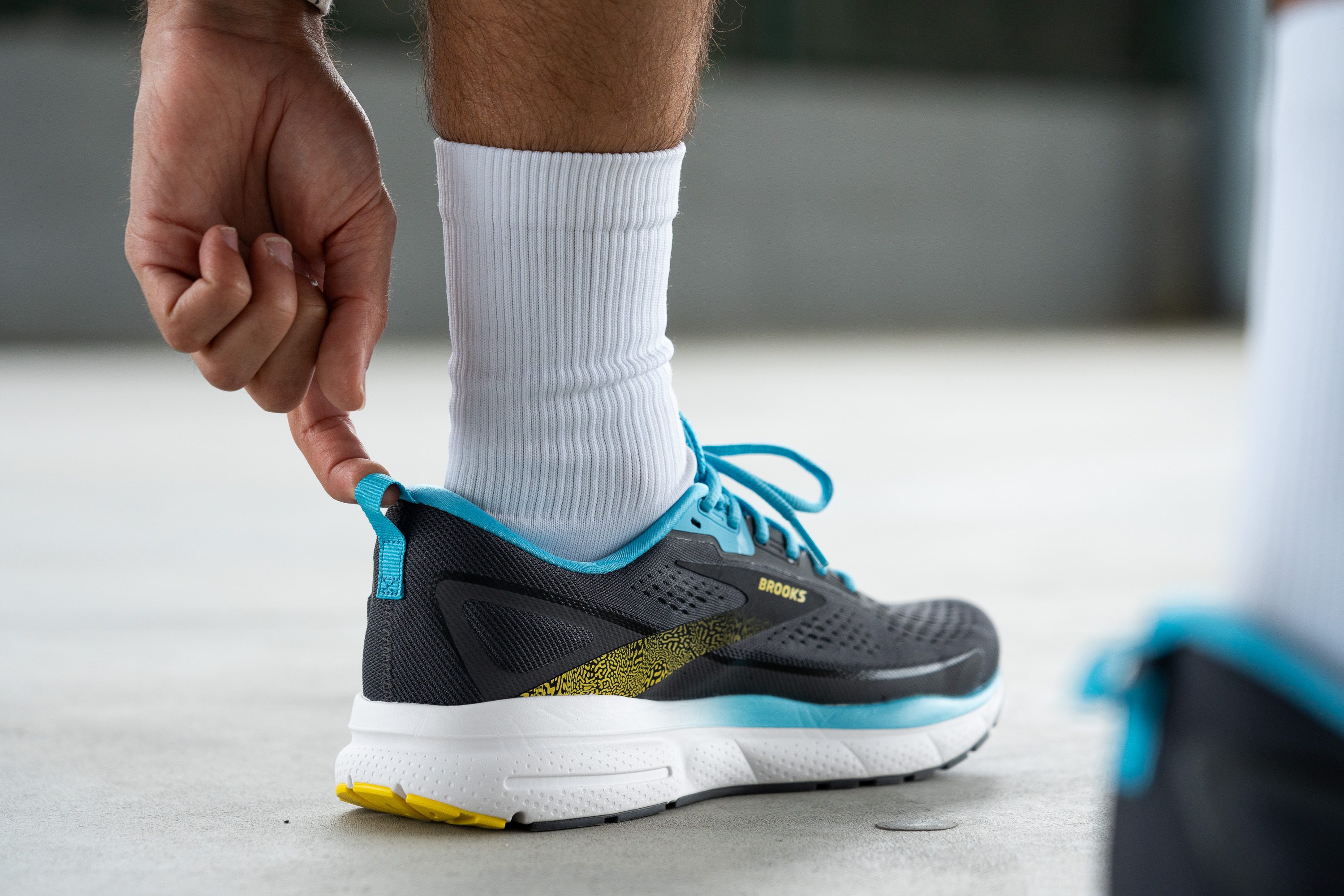
| Trace 3 | Finger loop |

